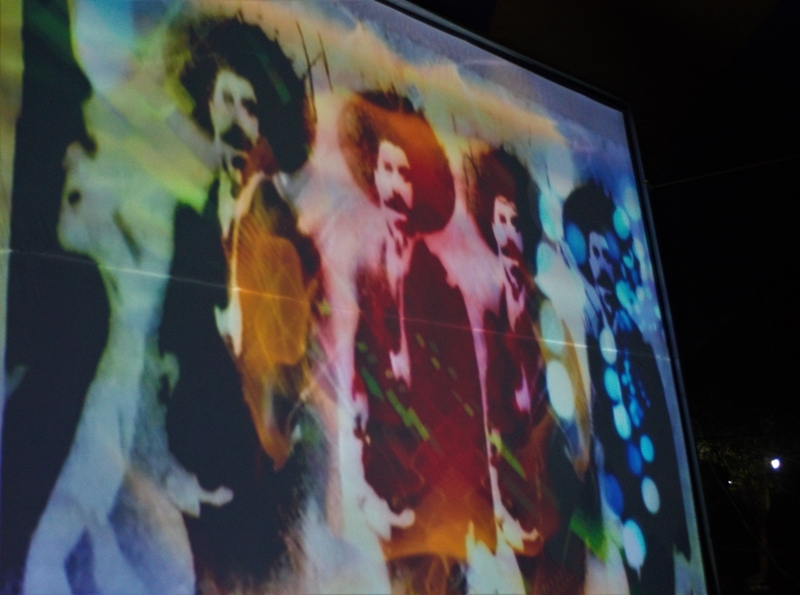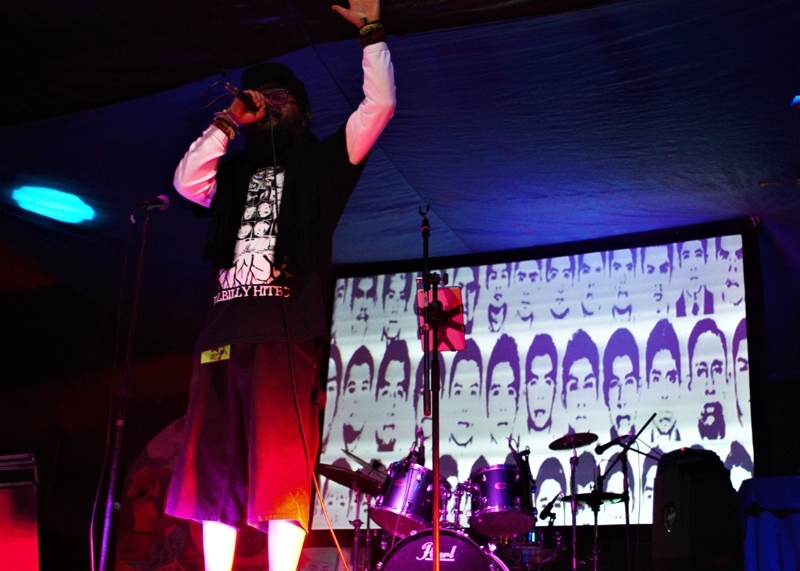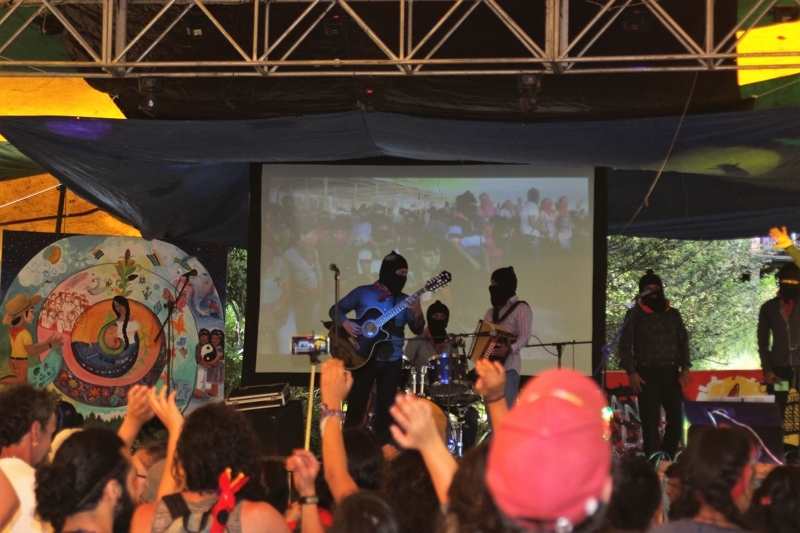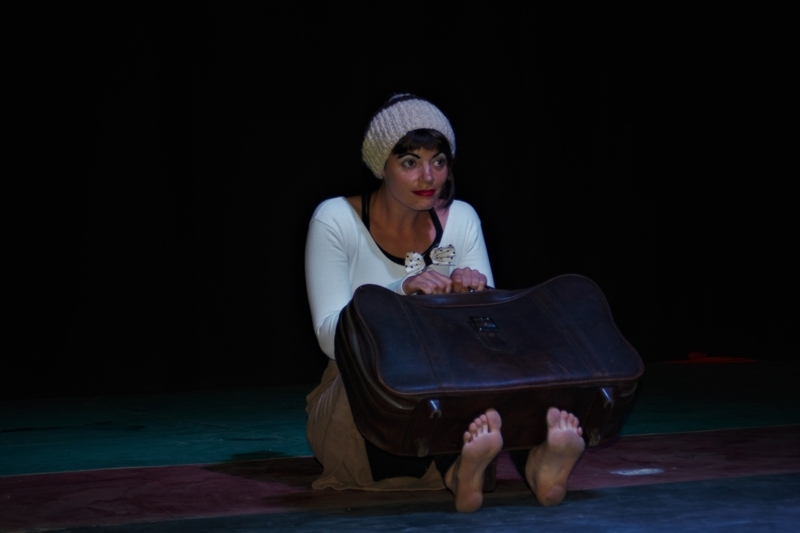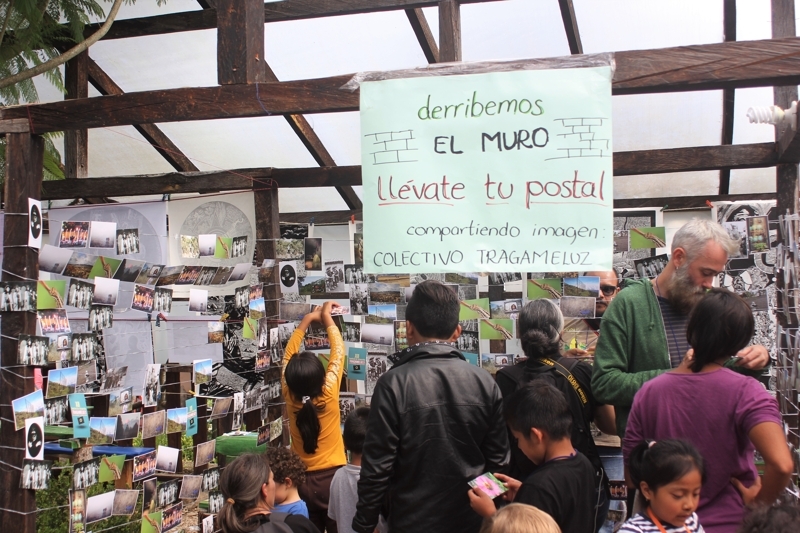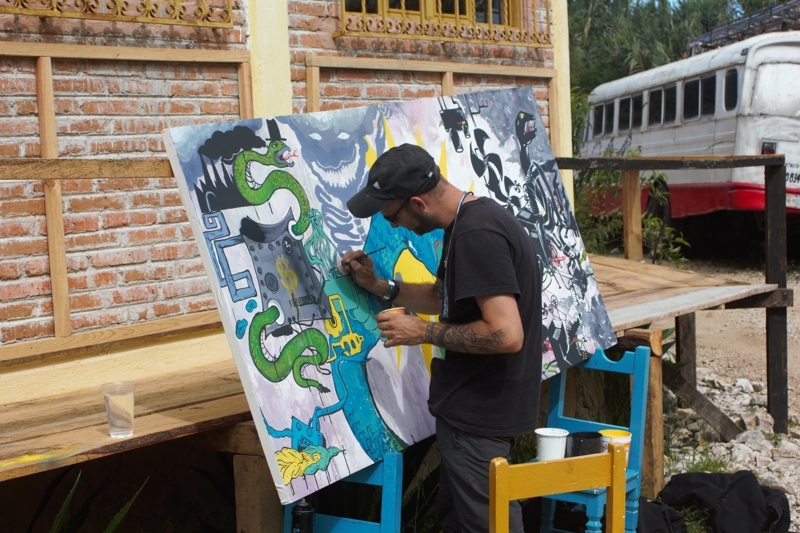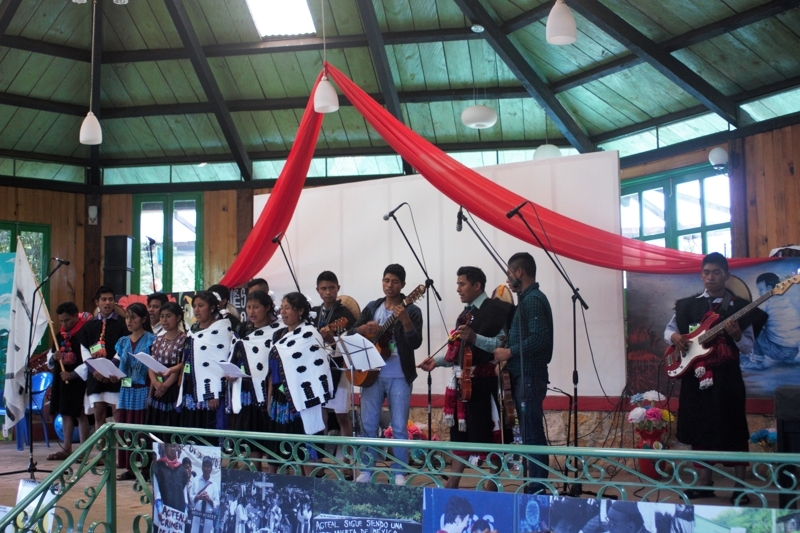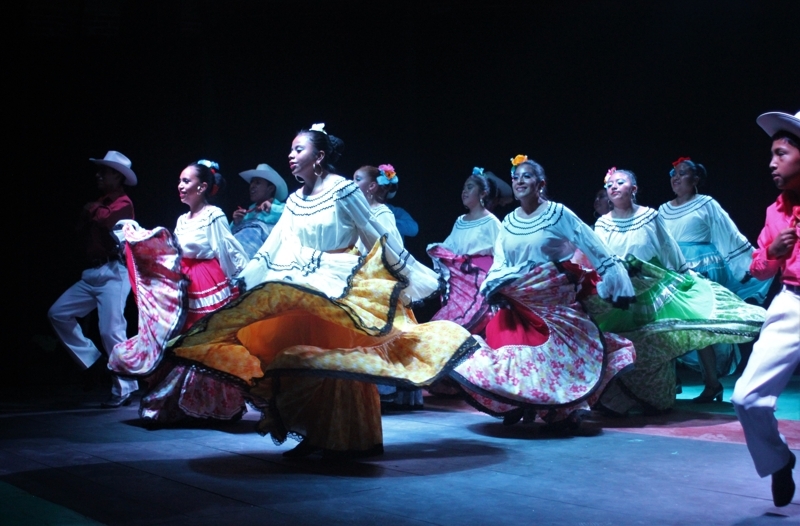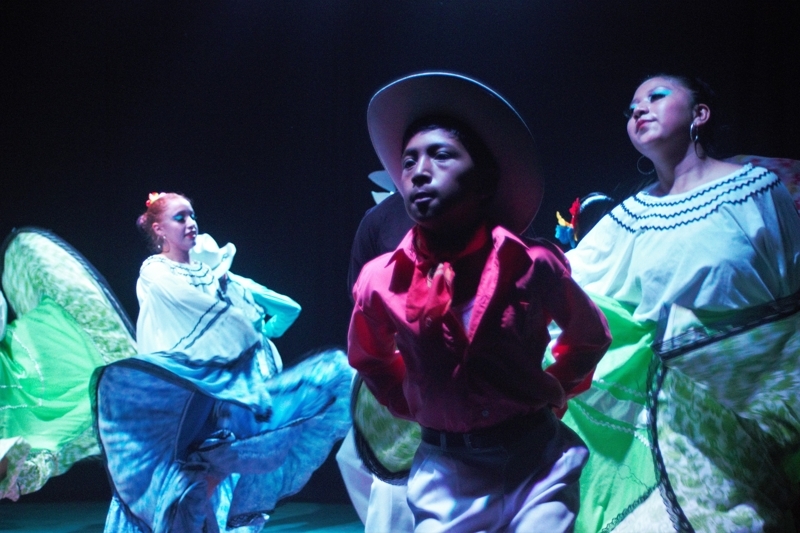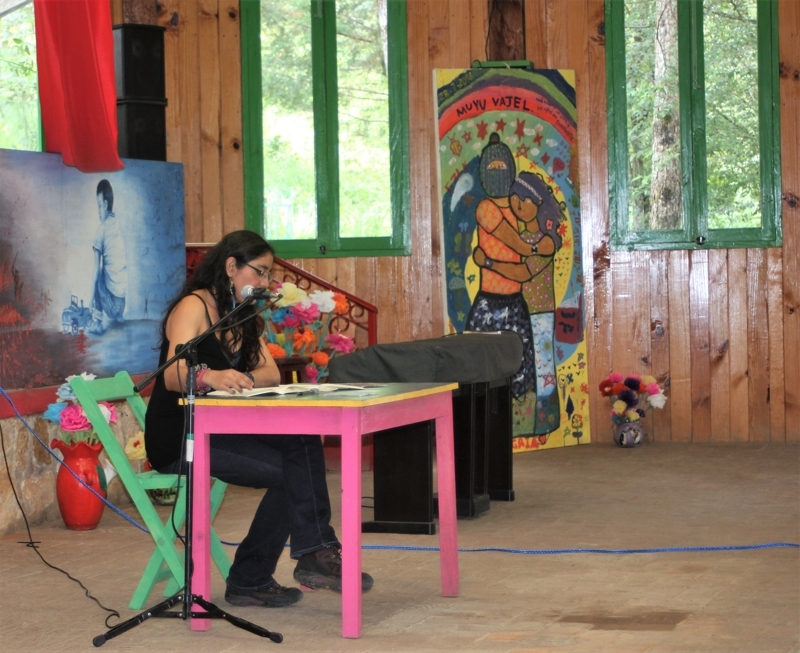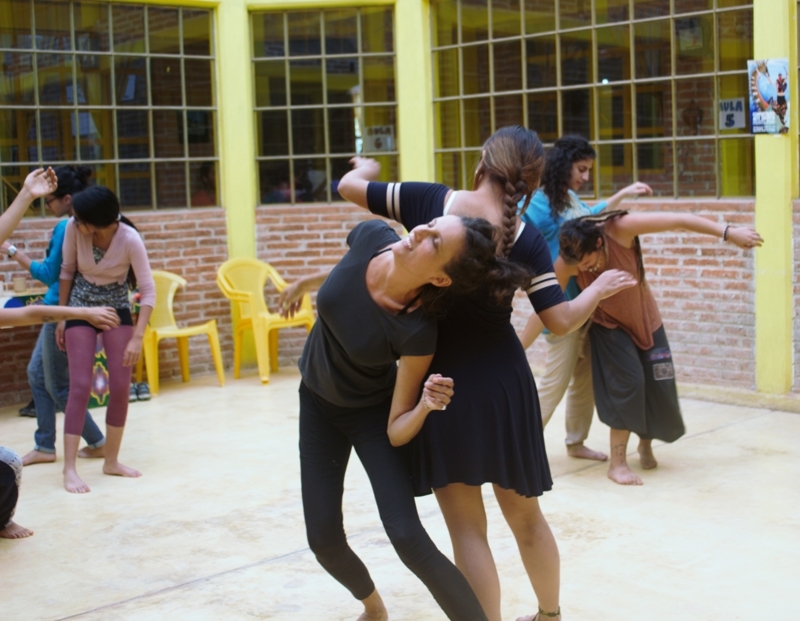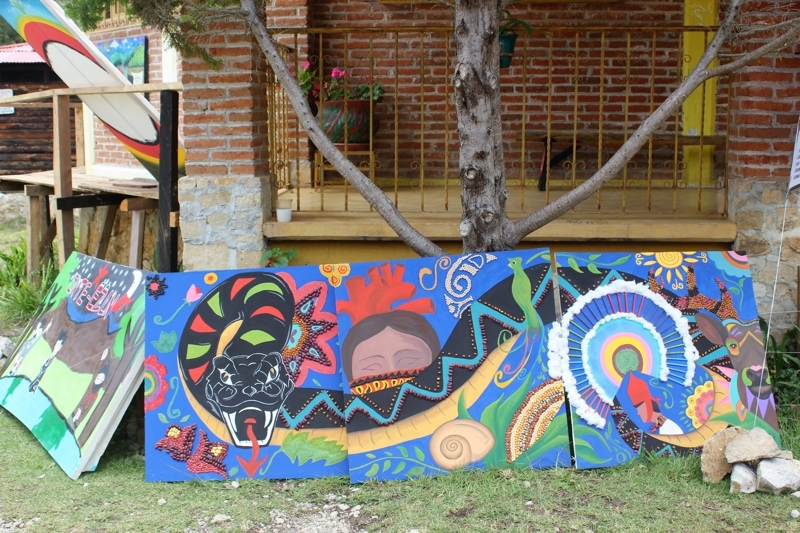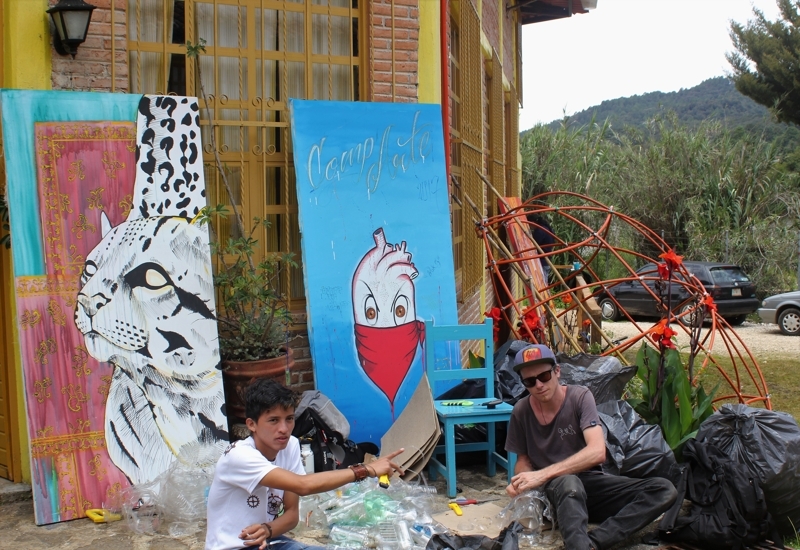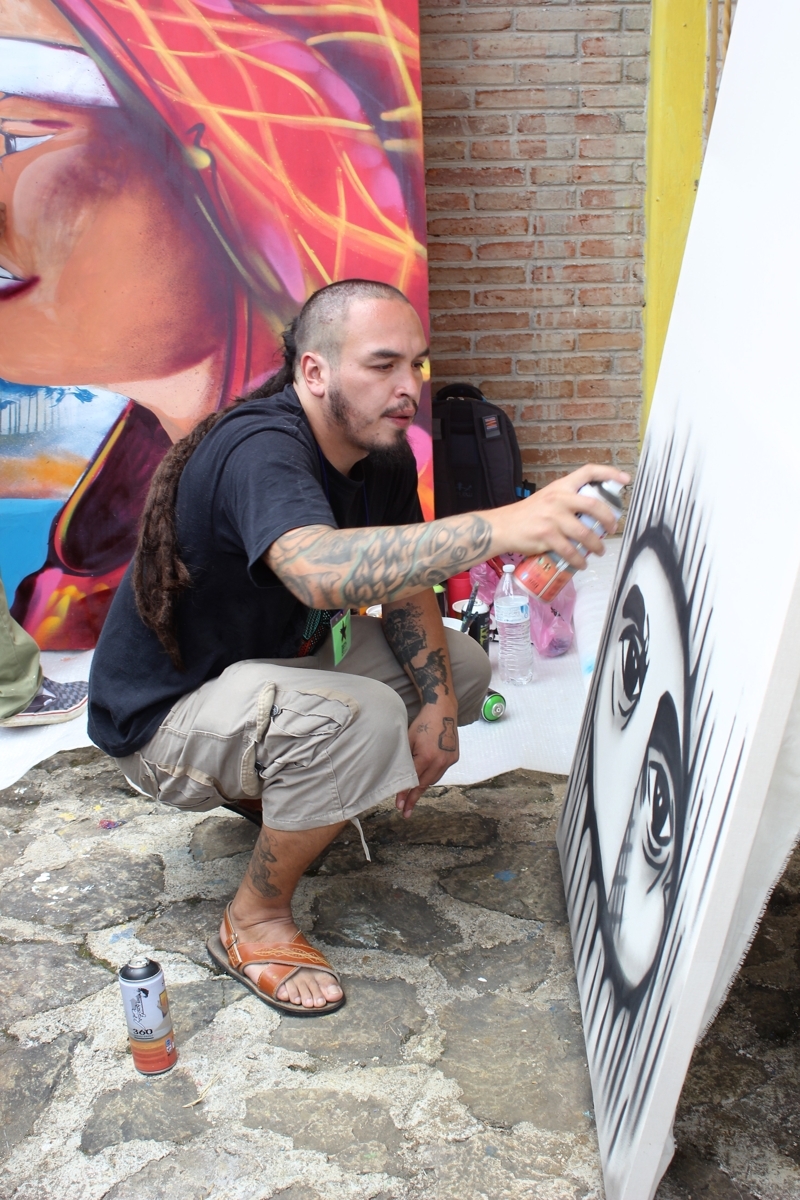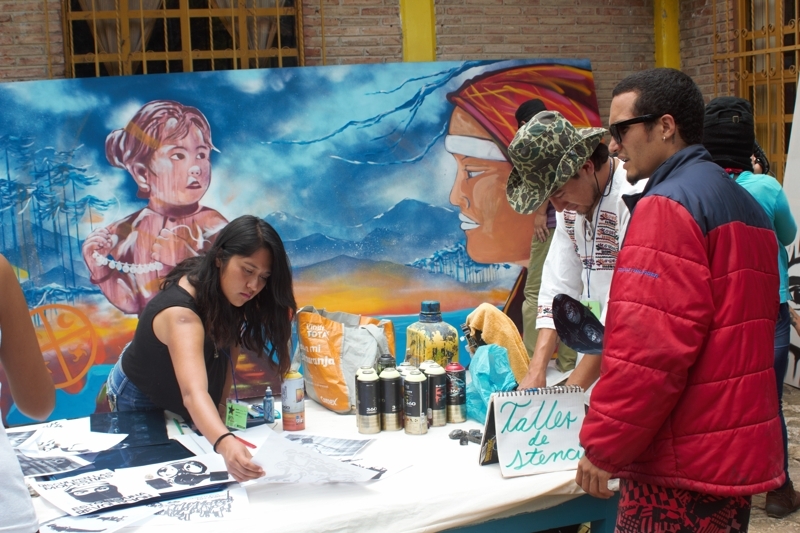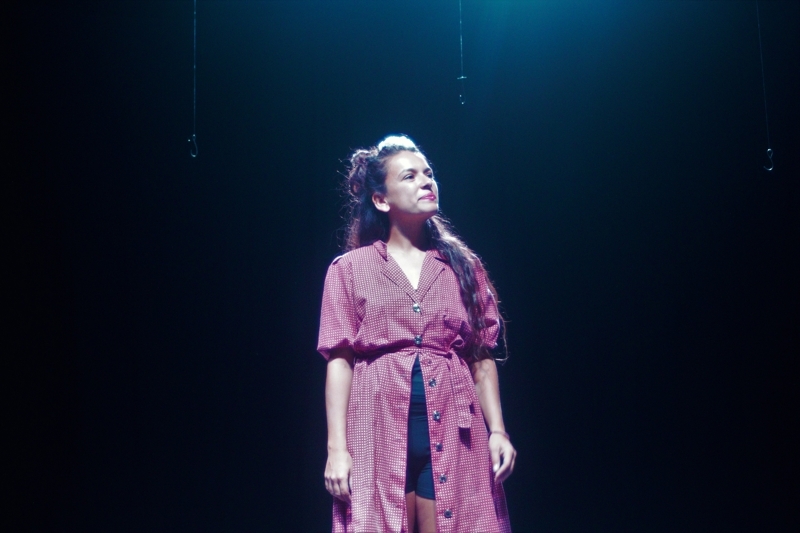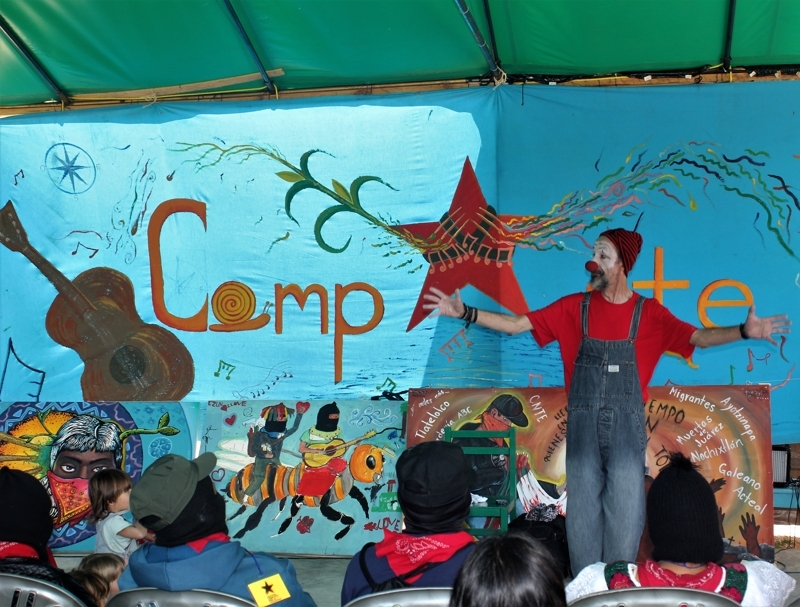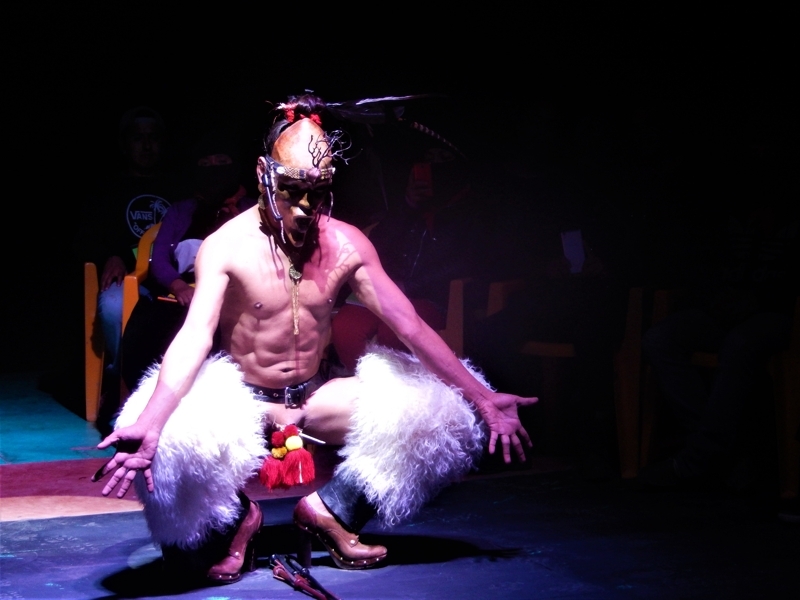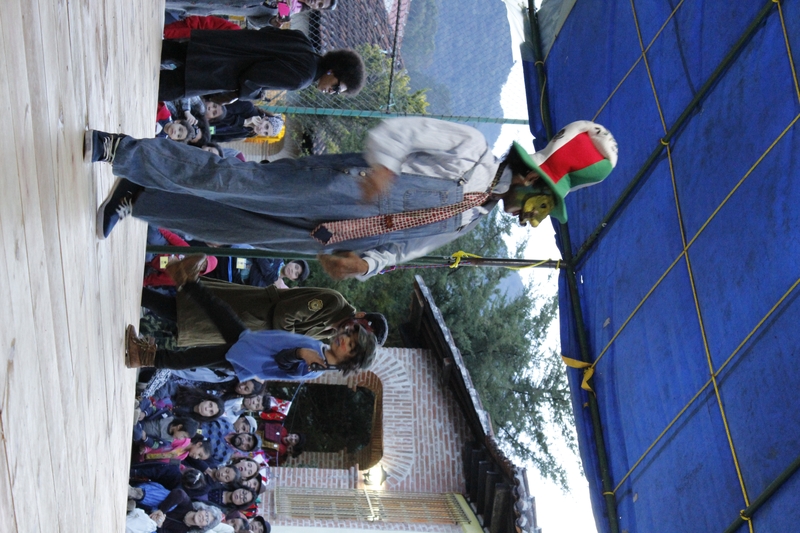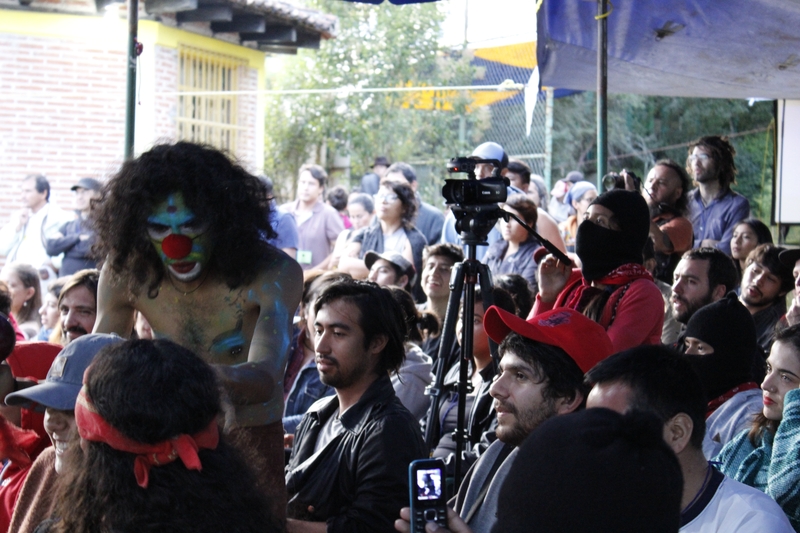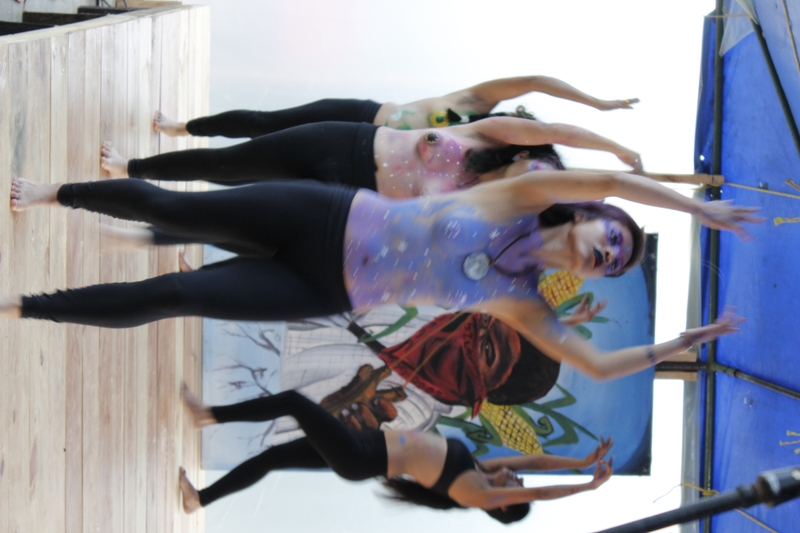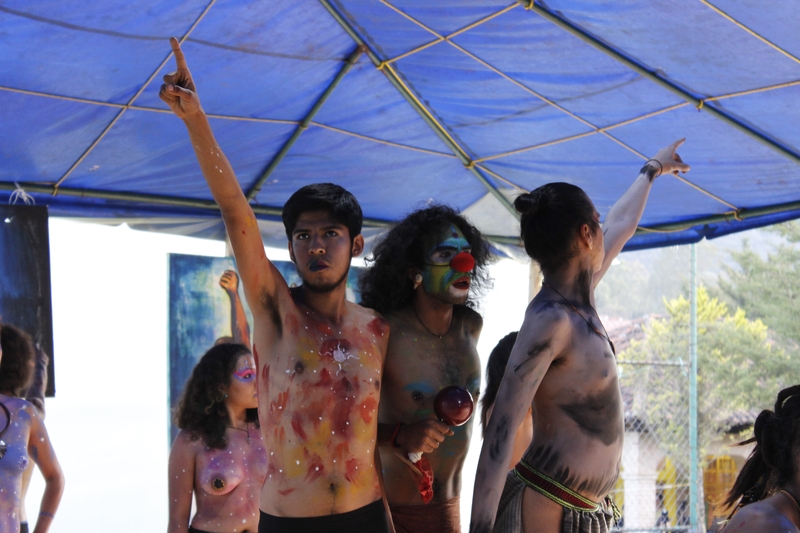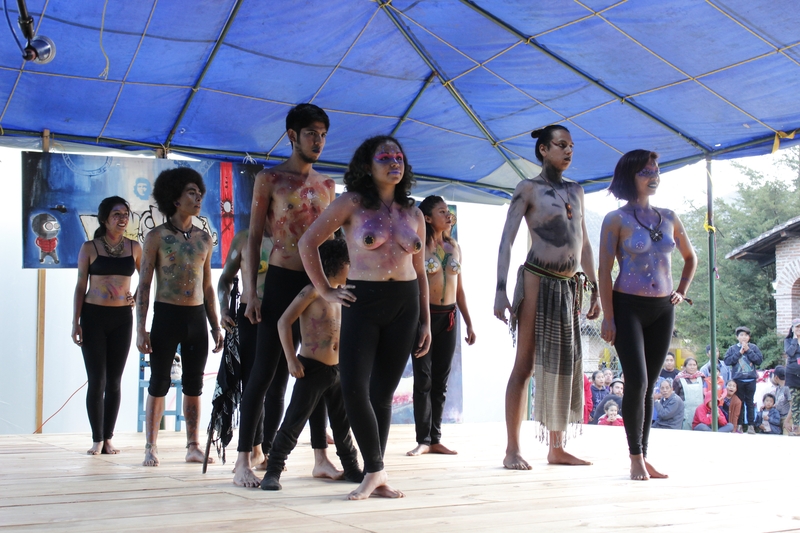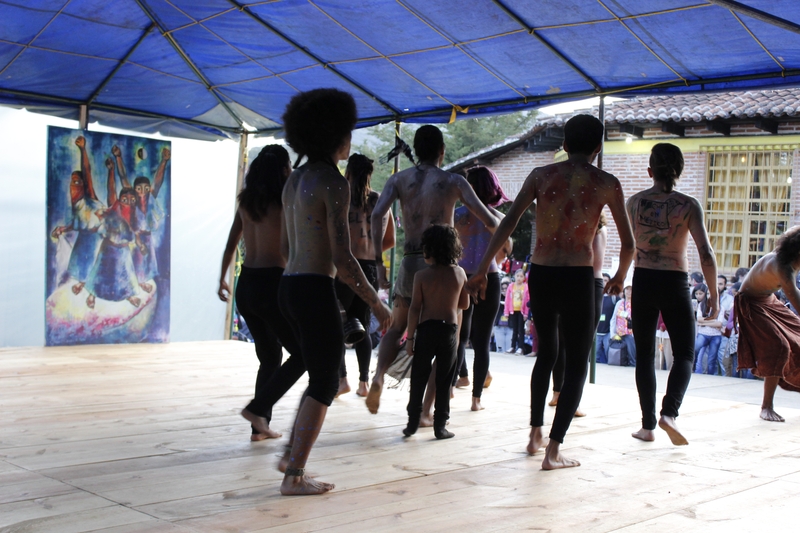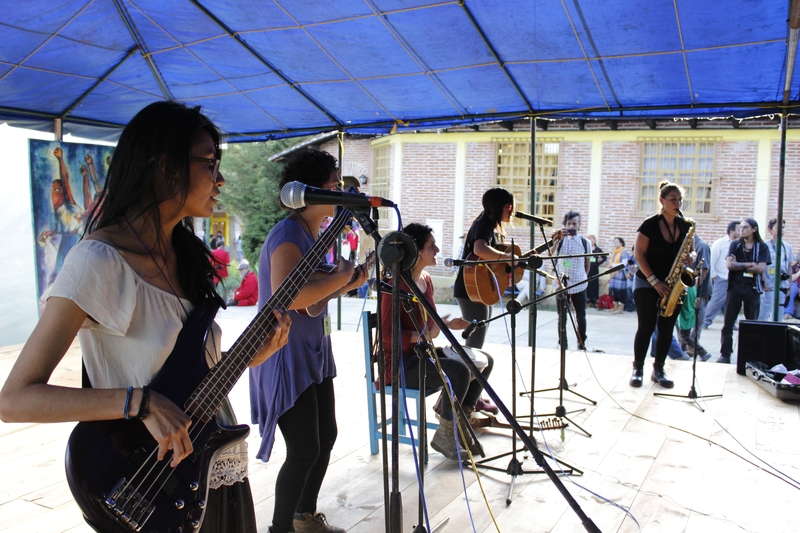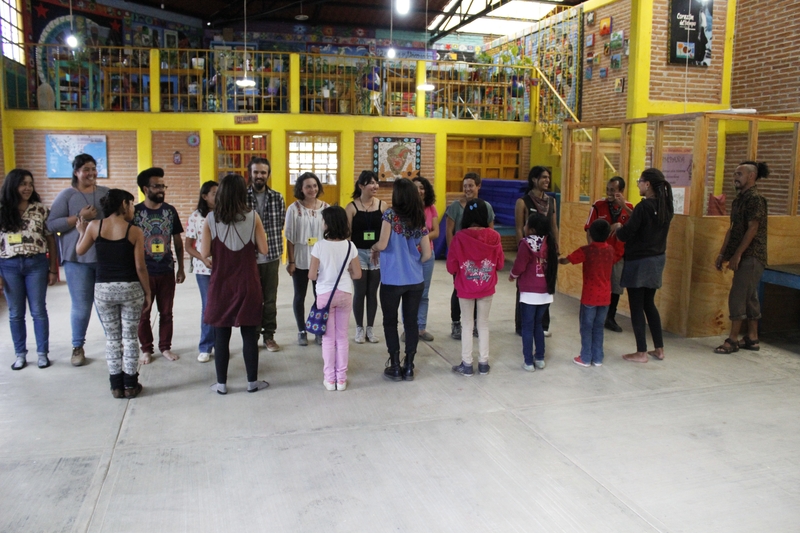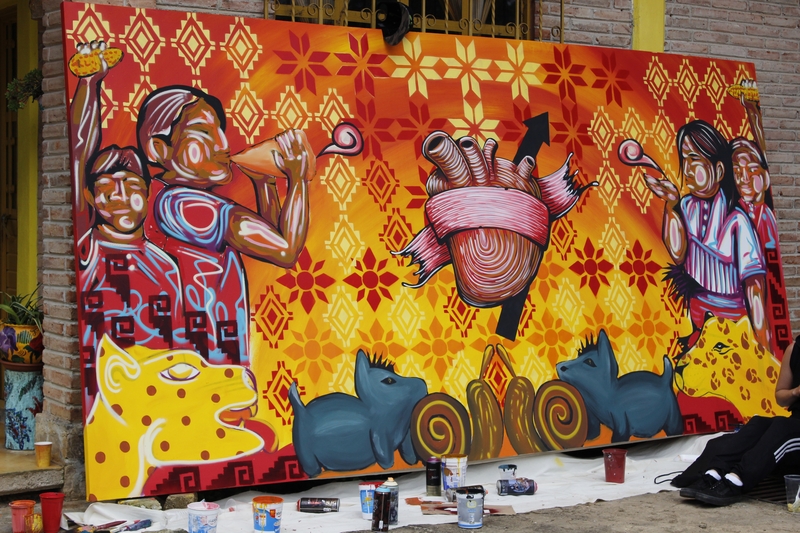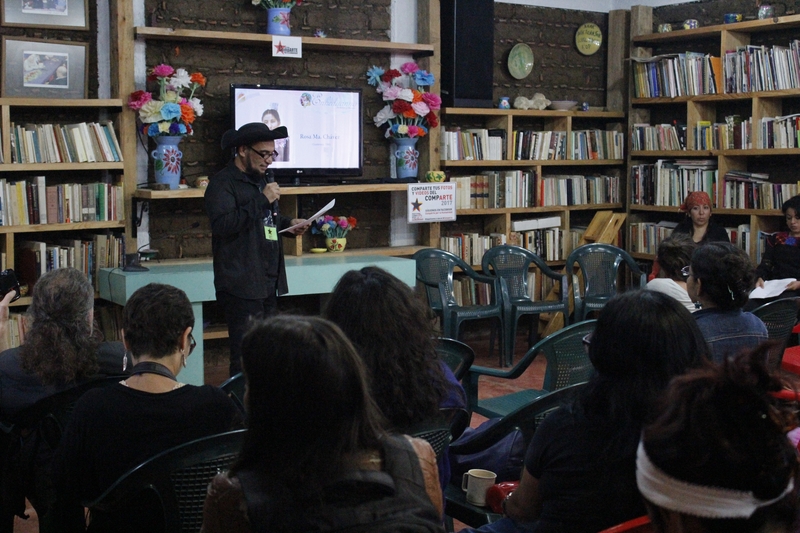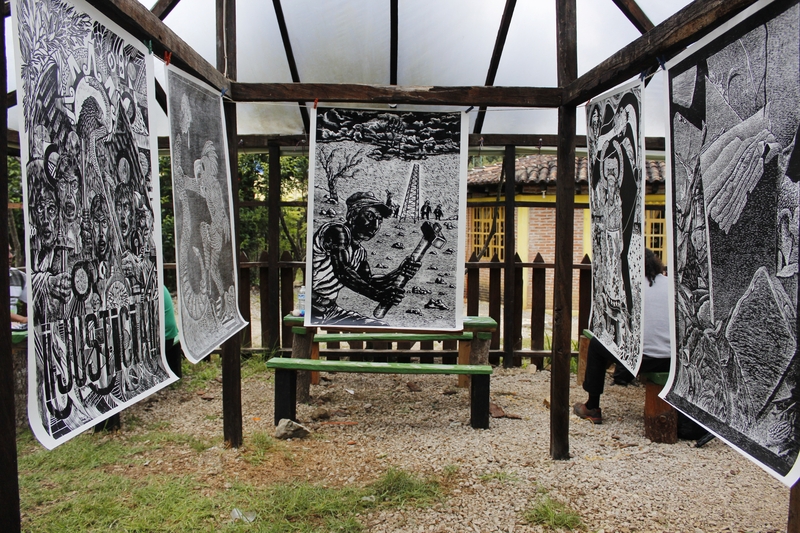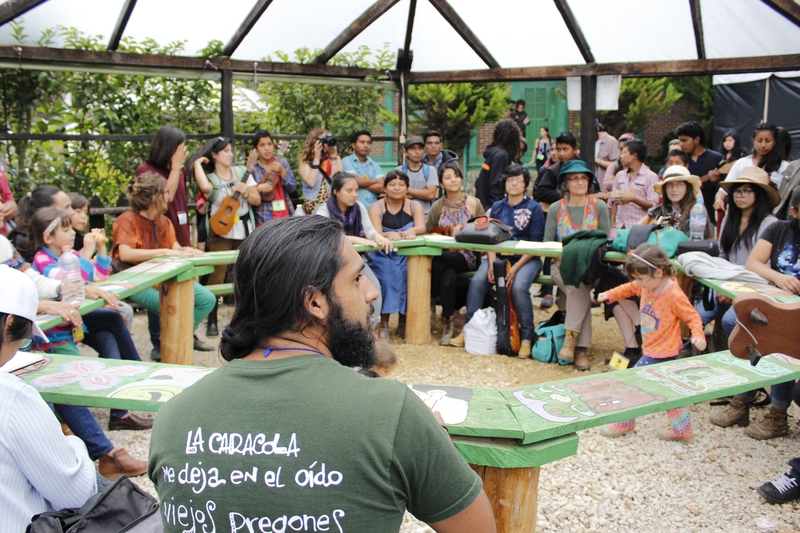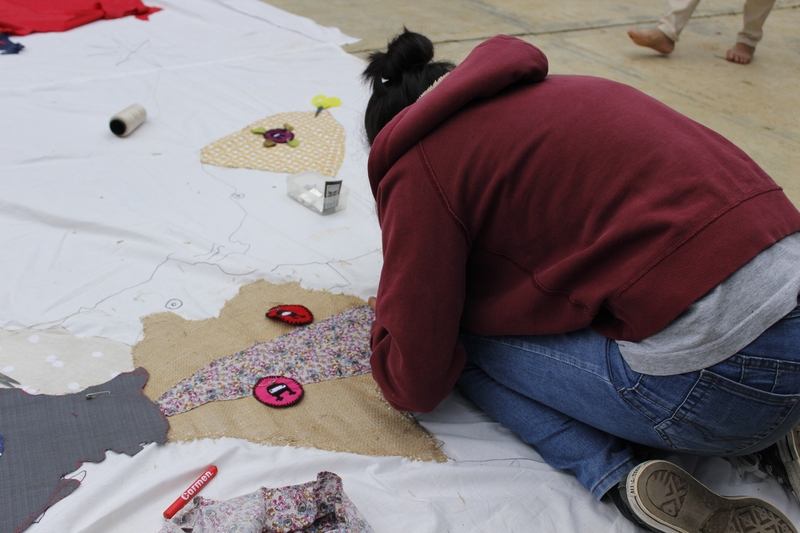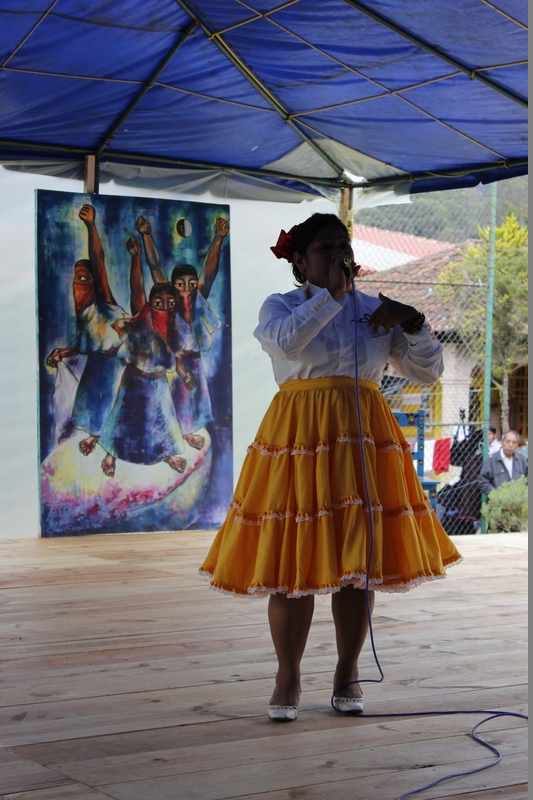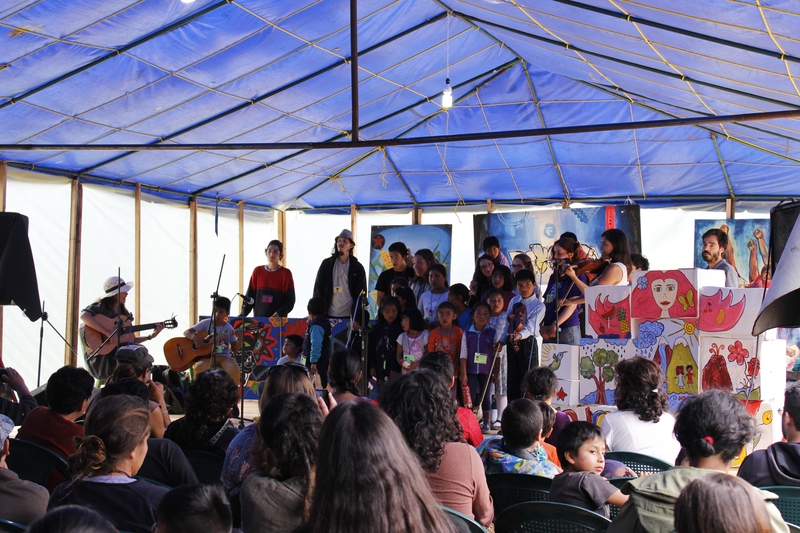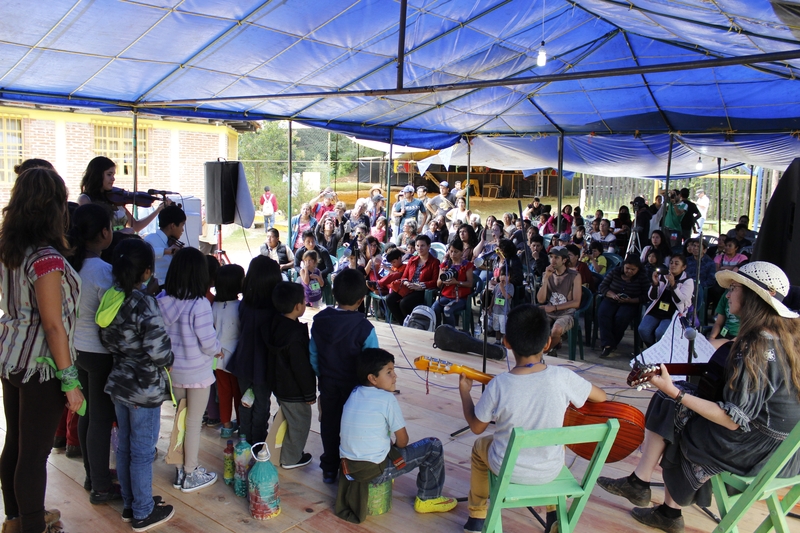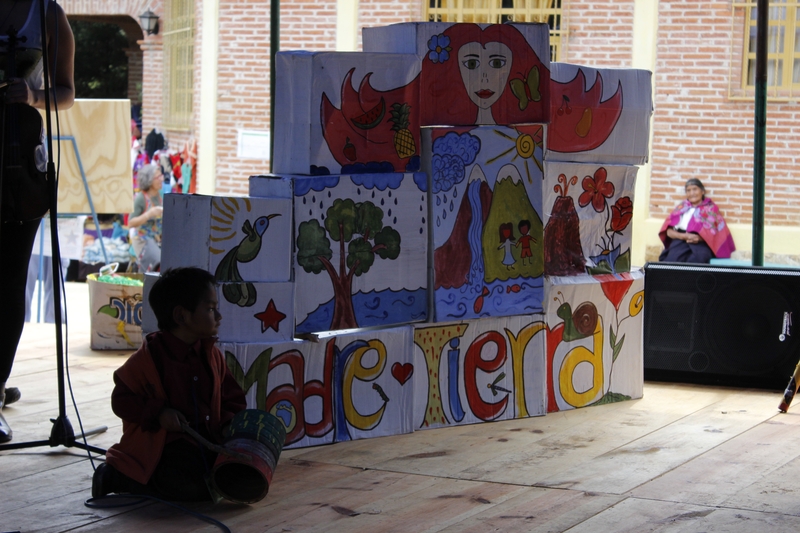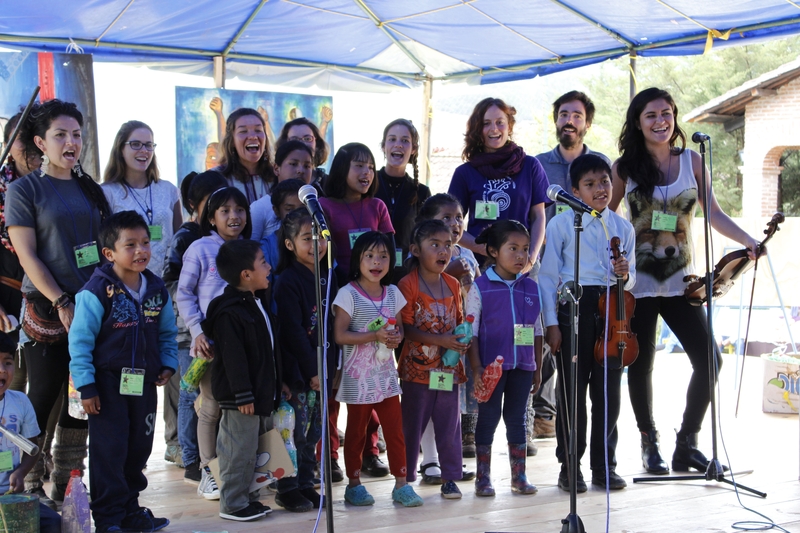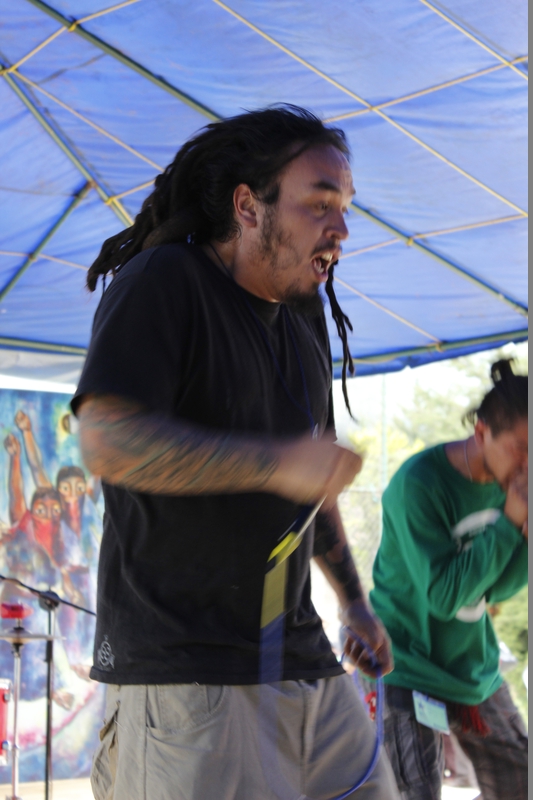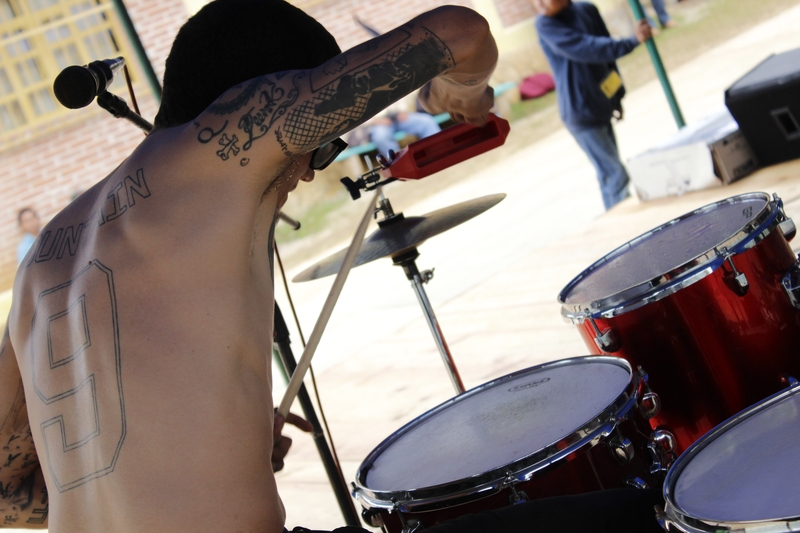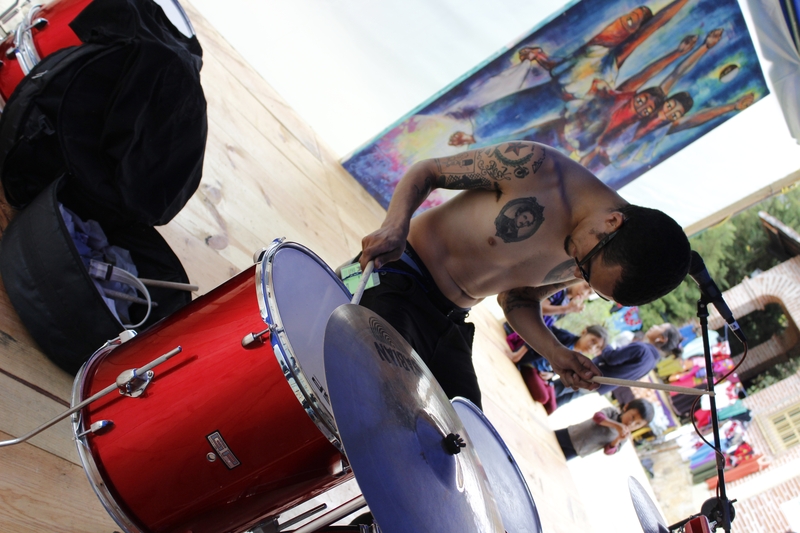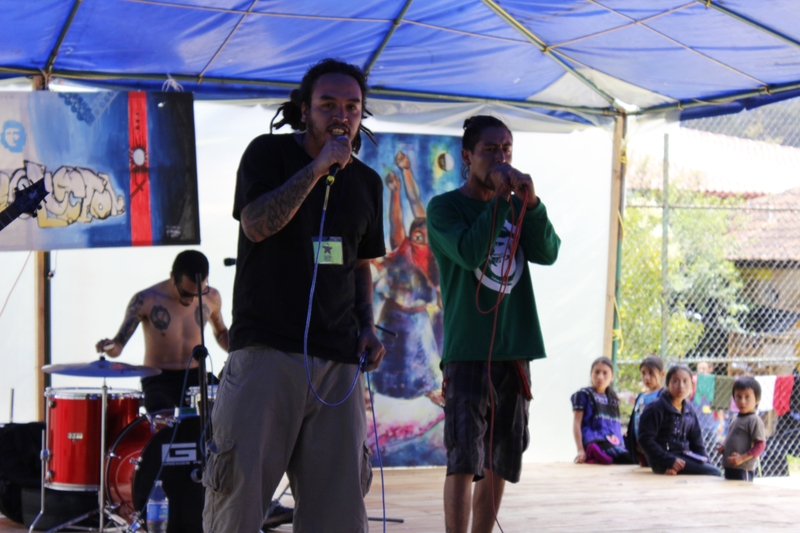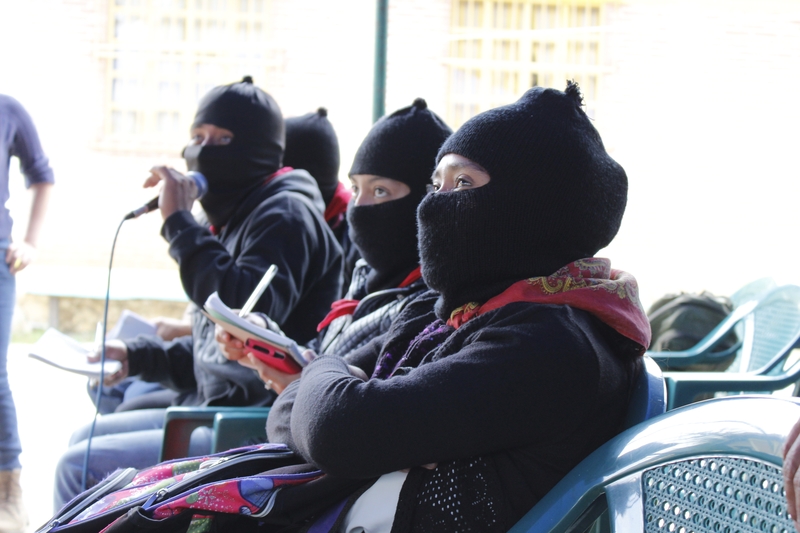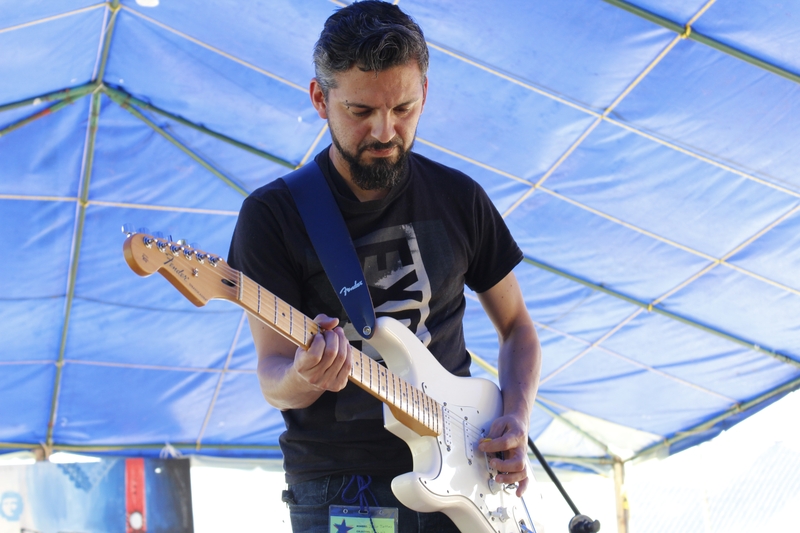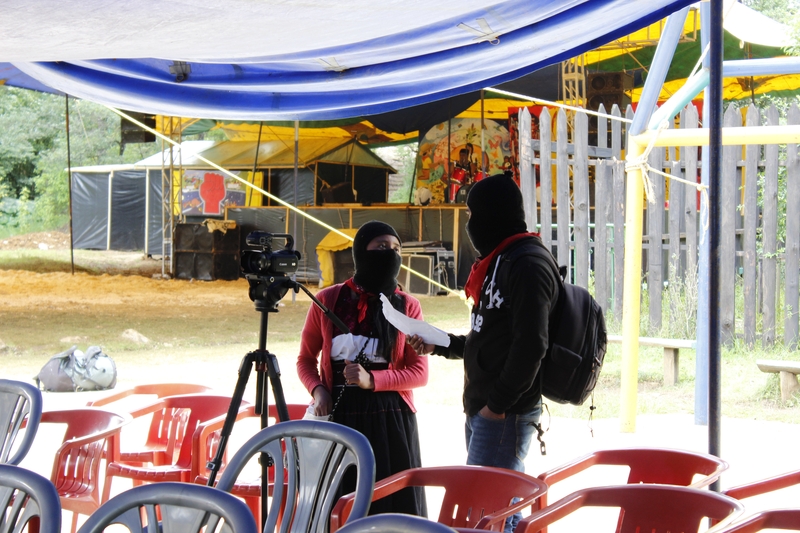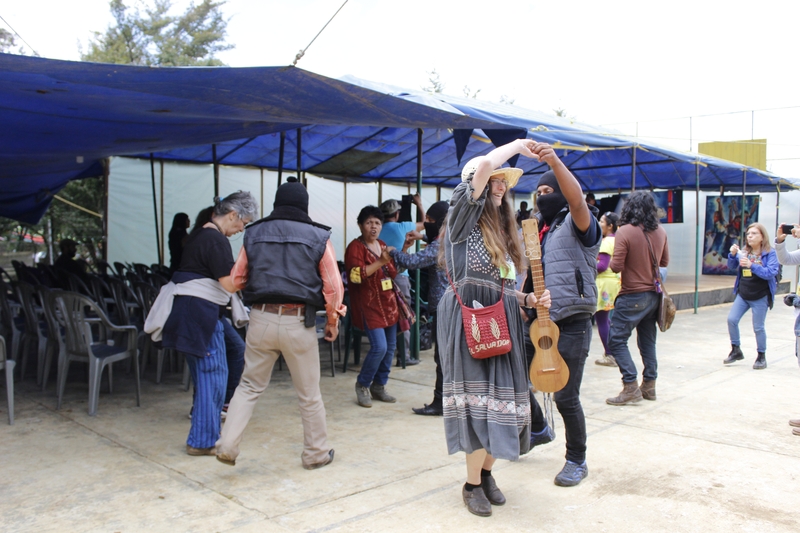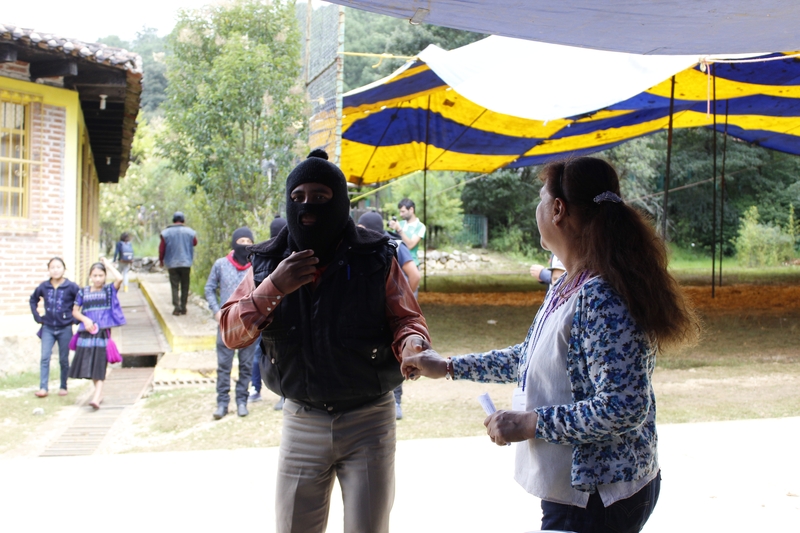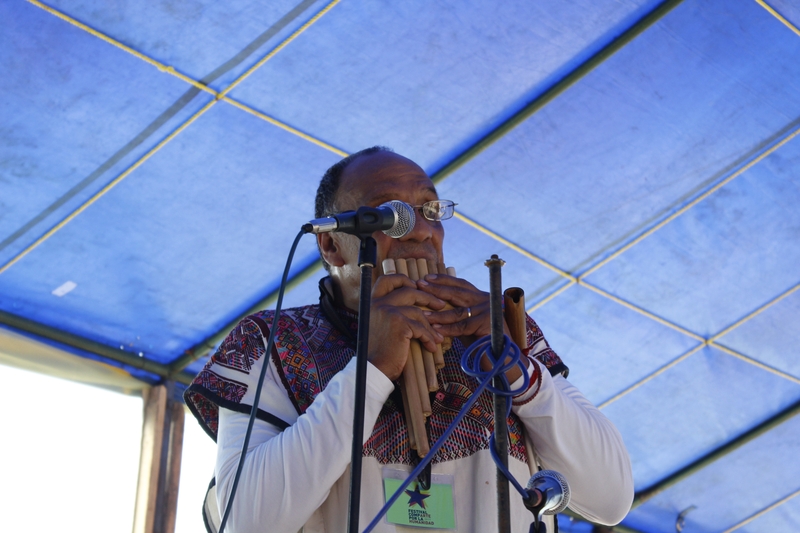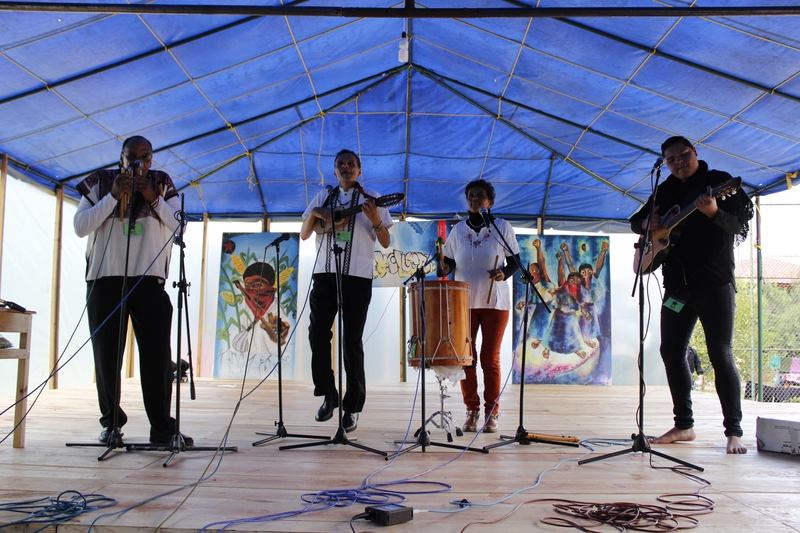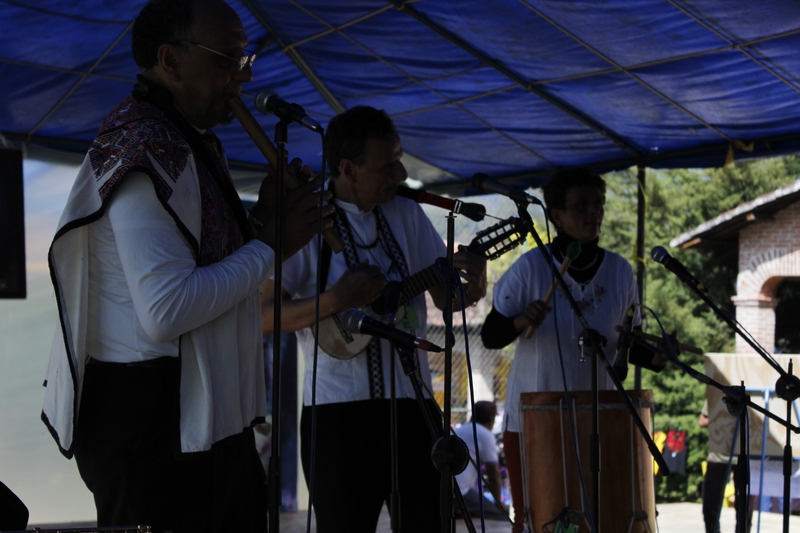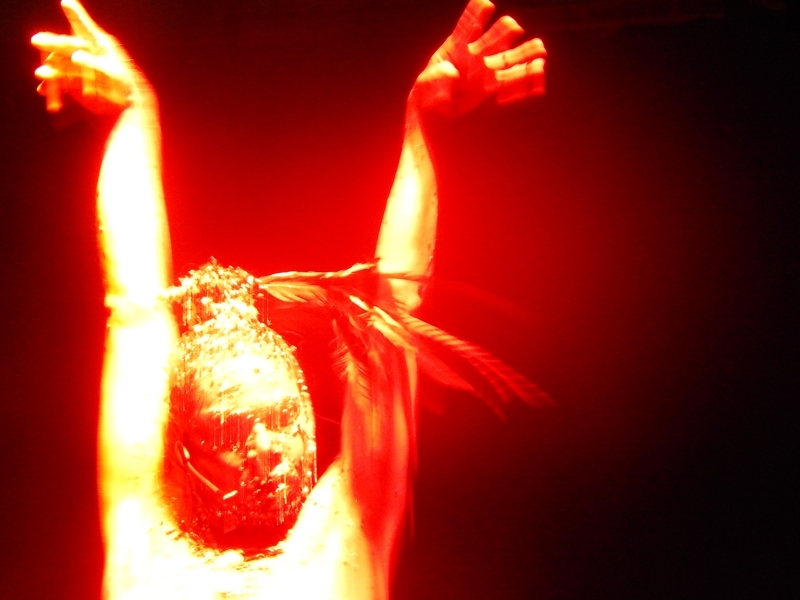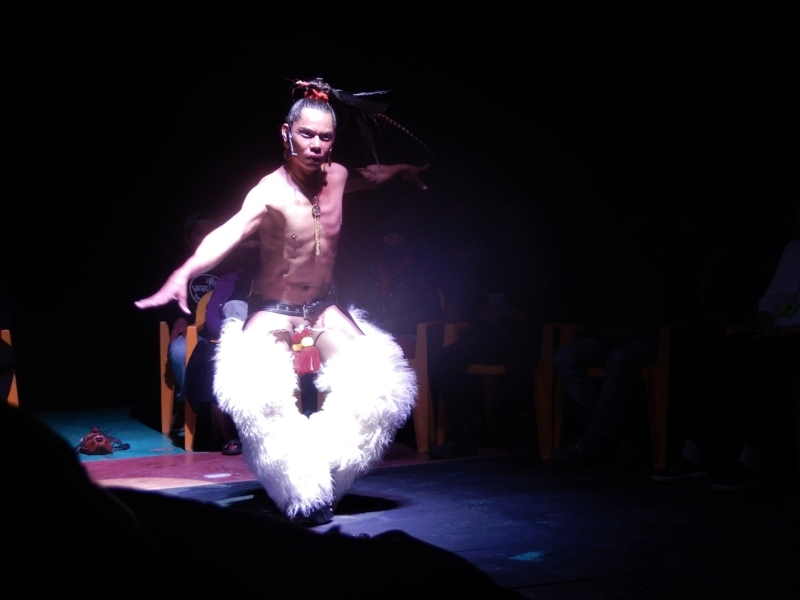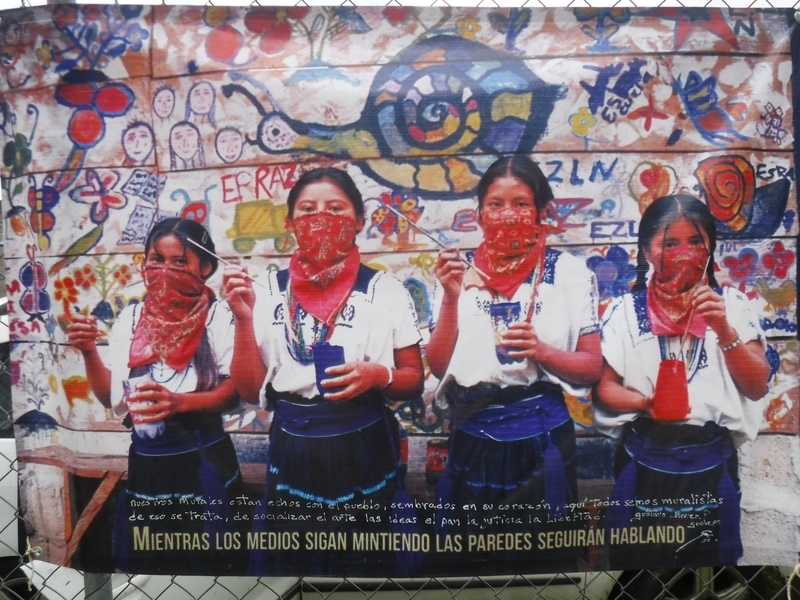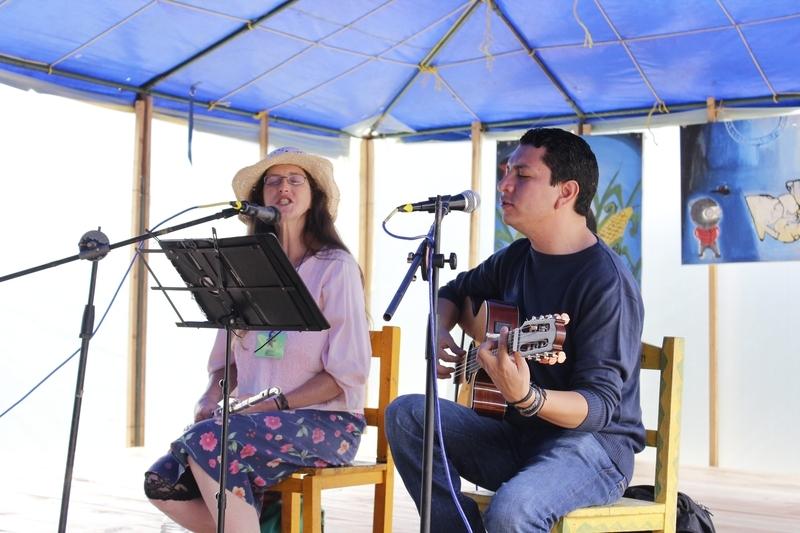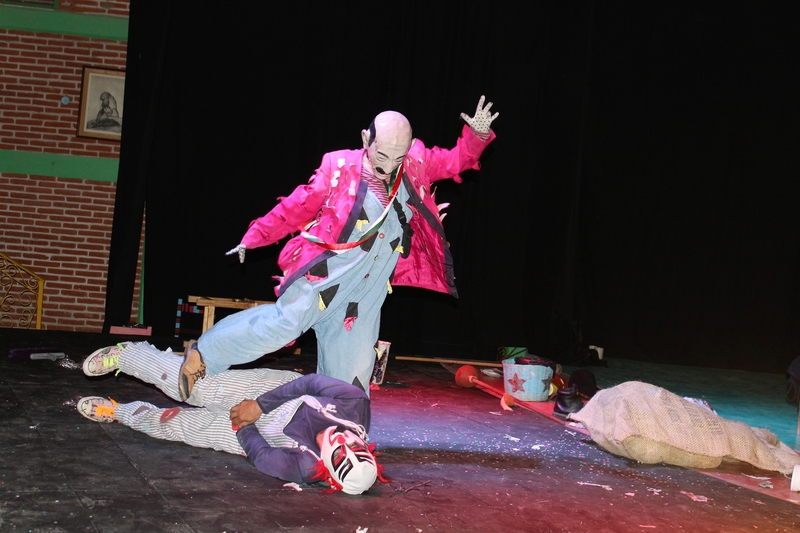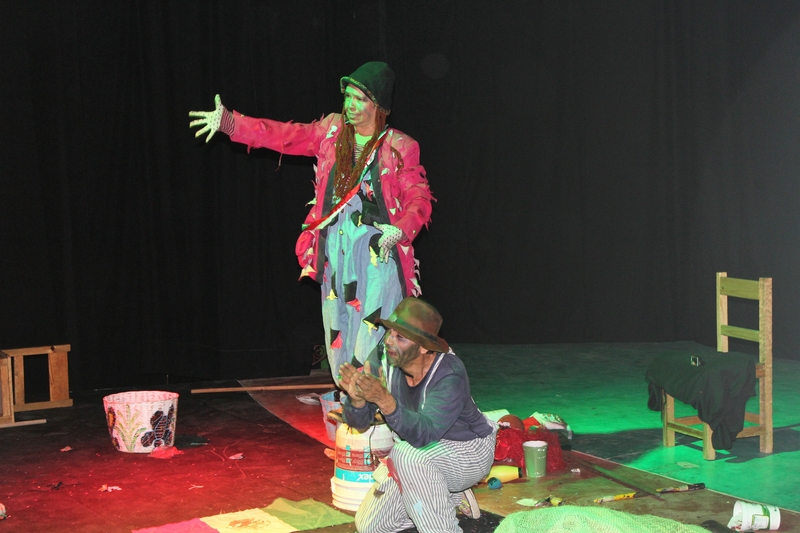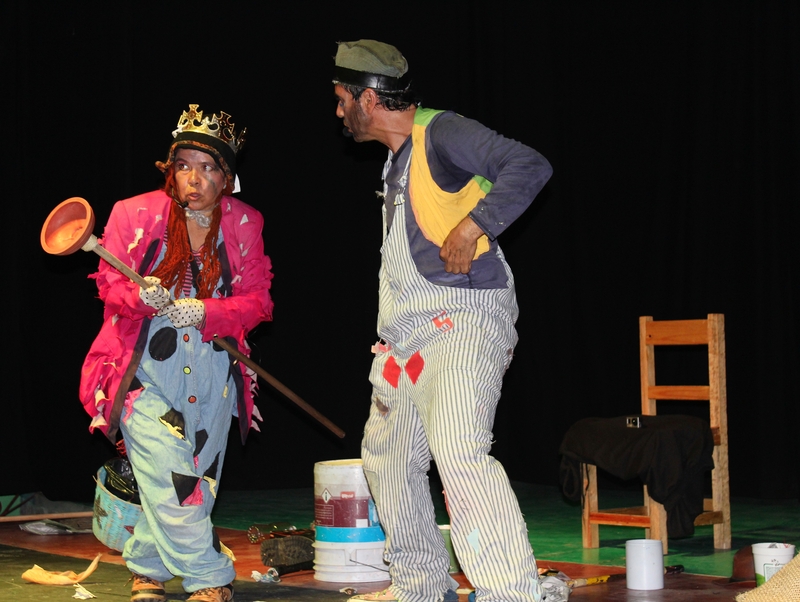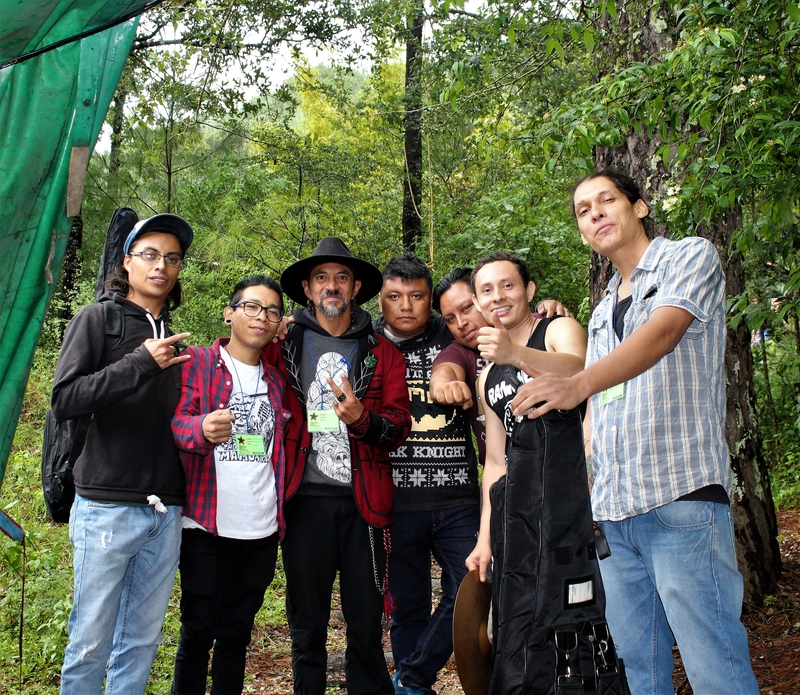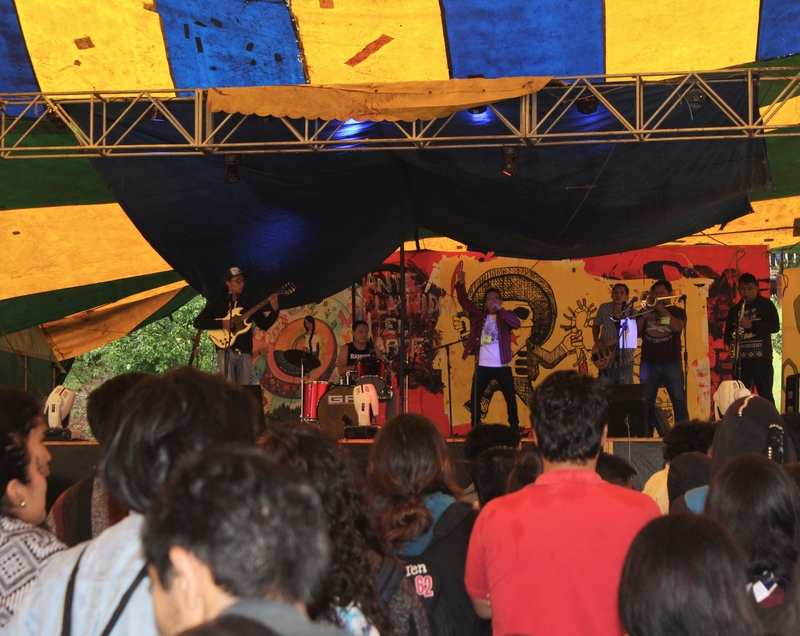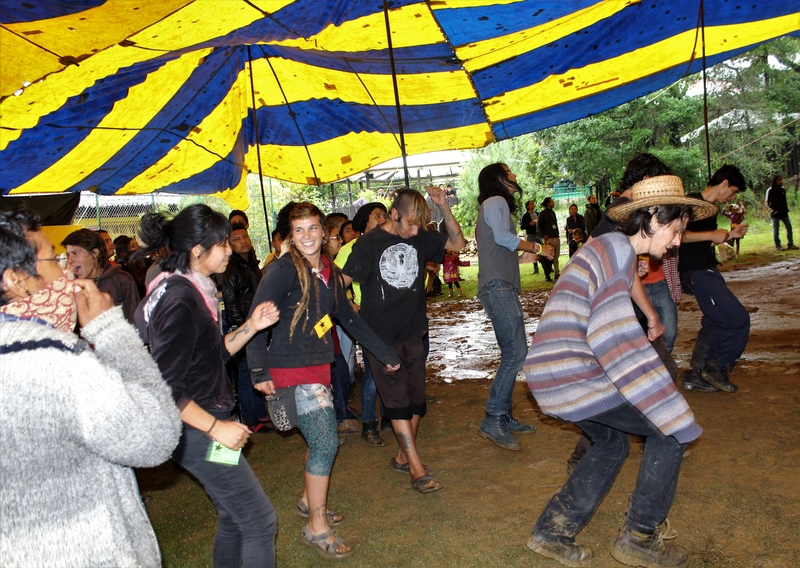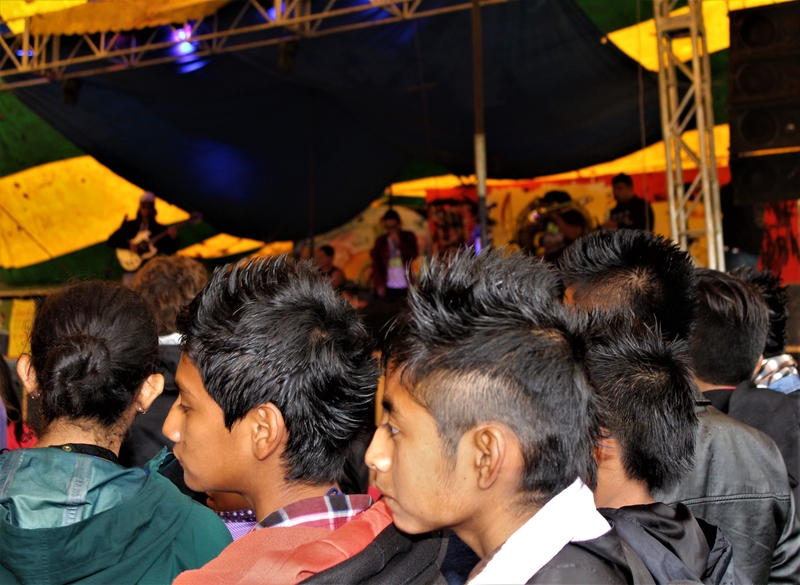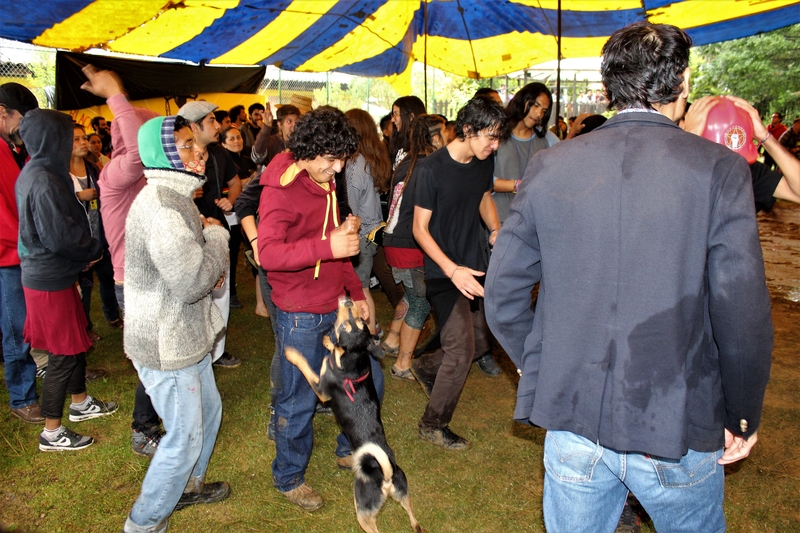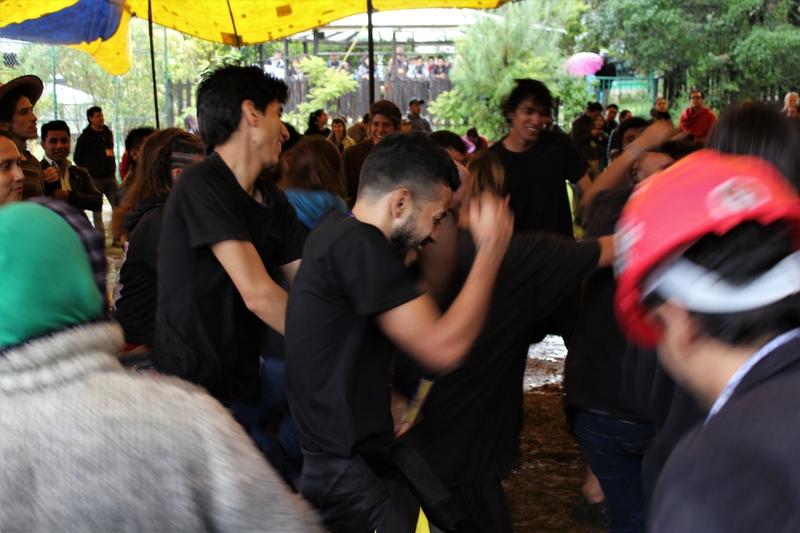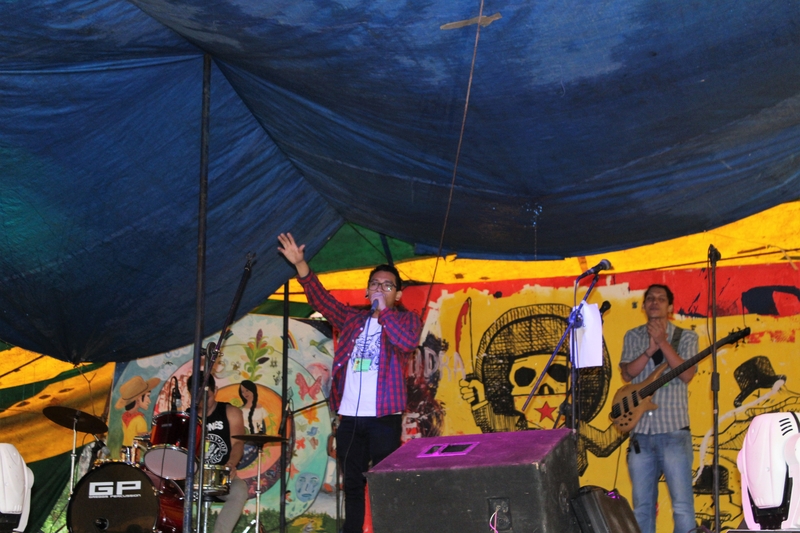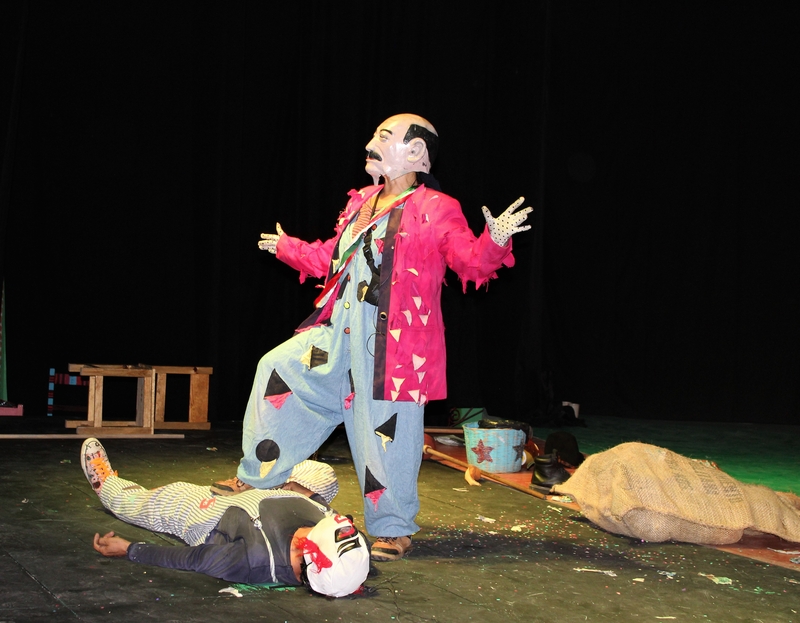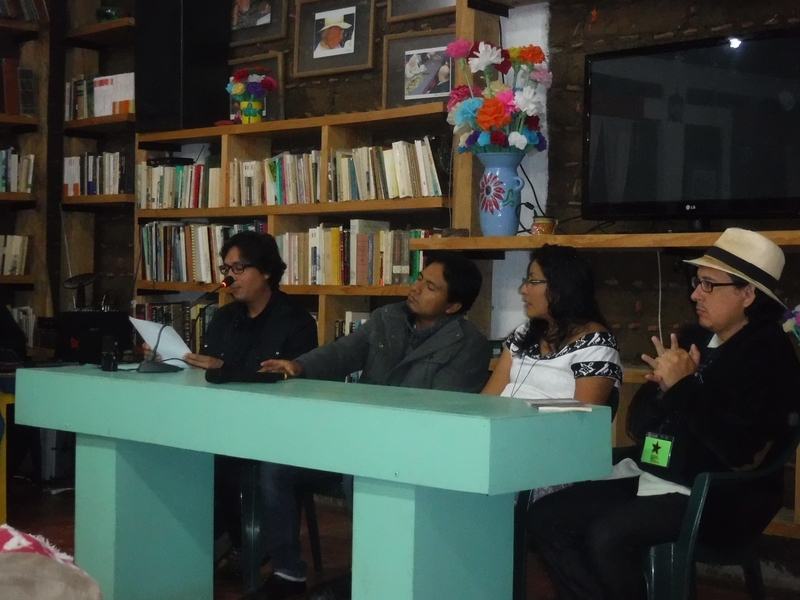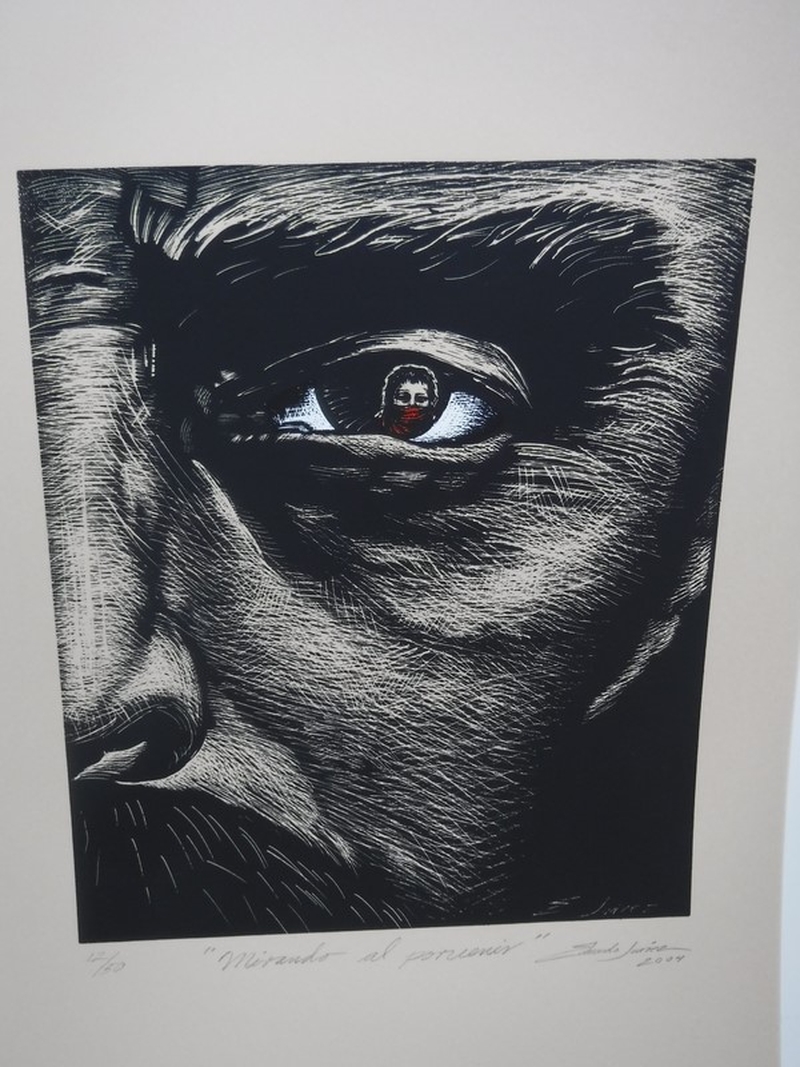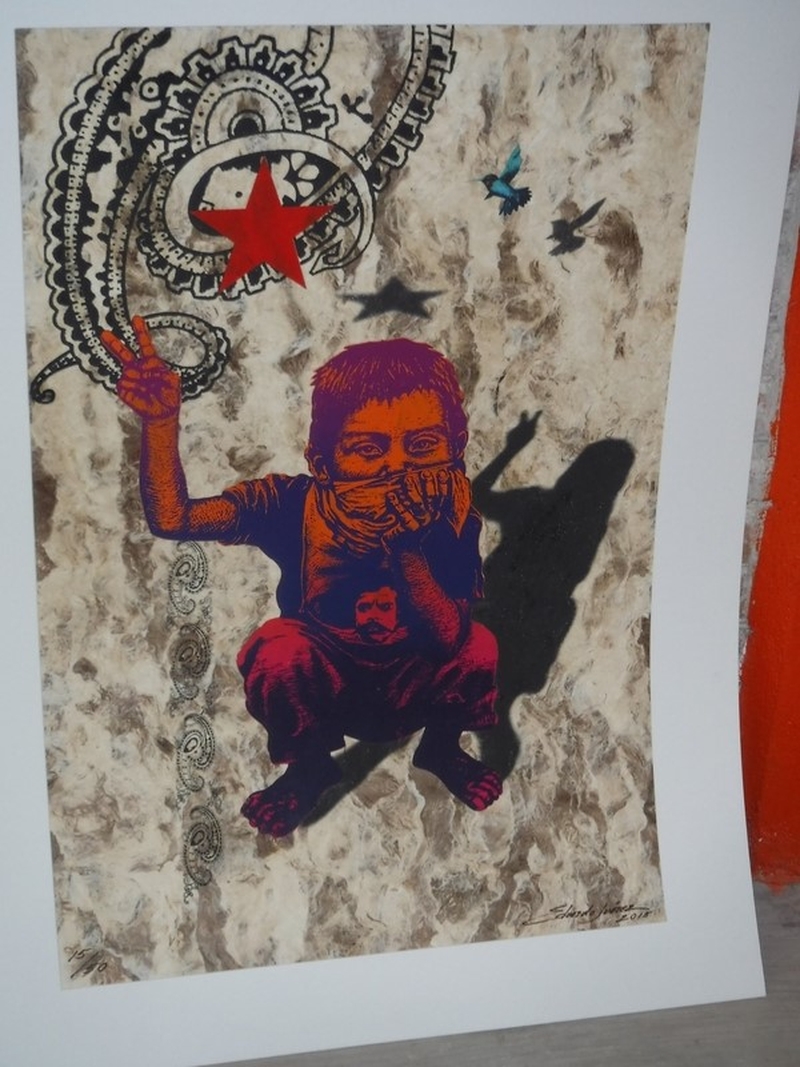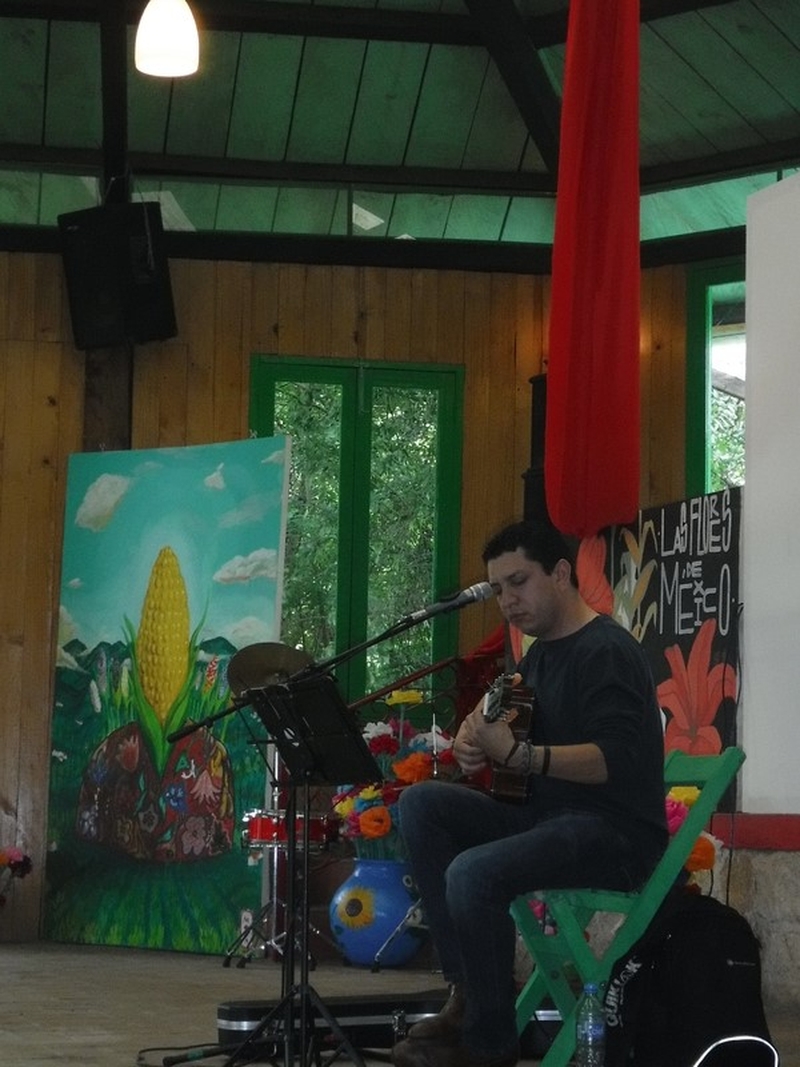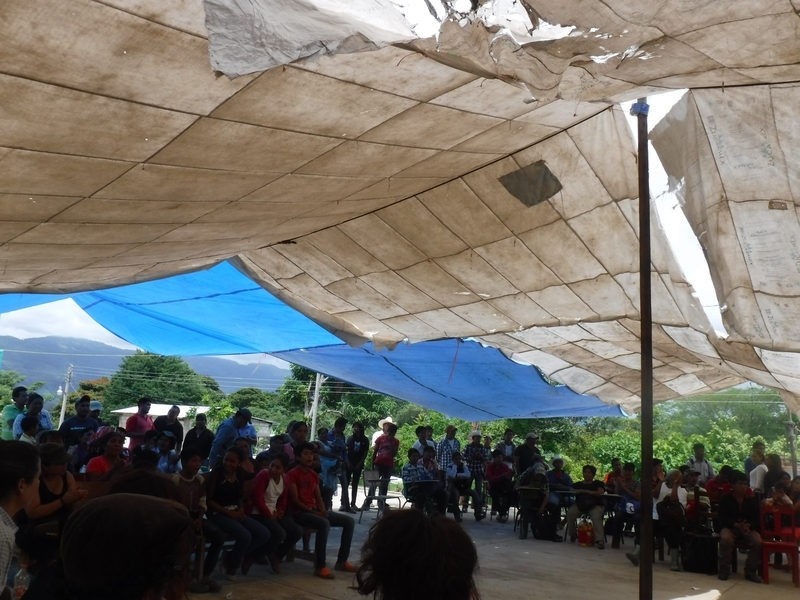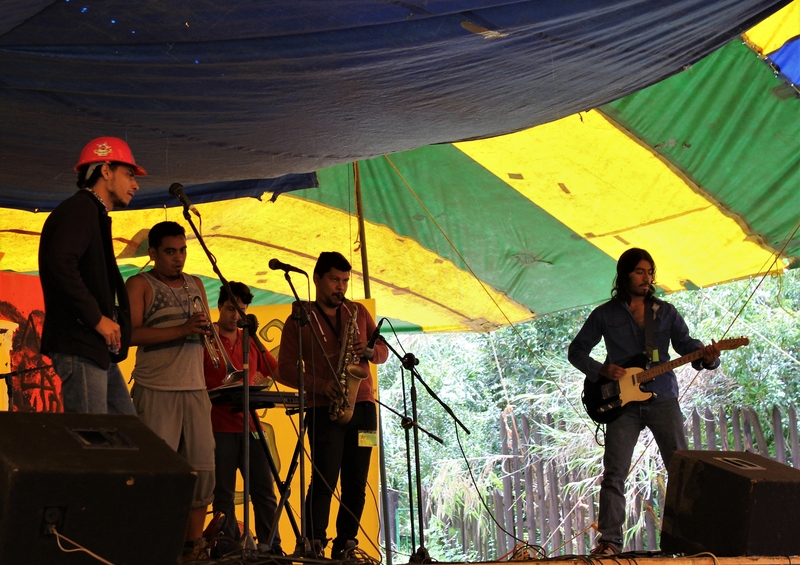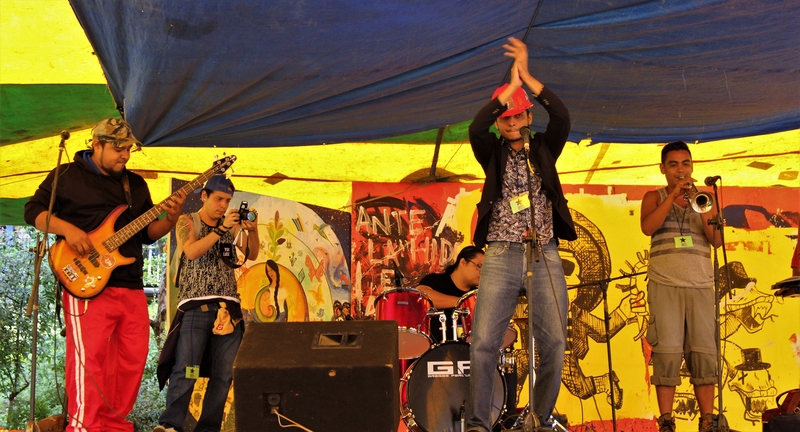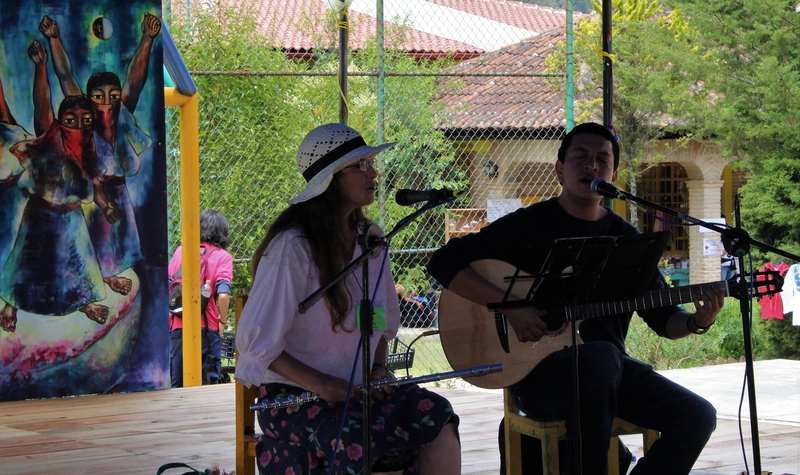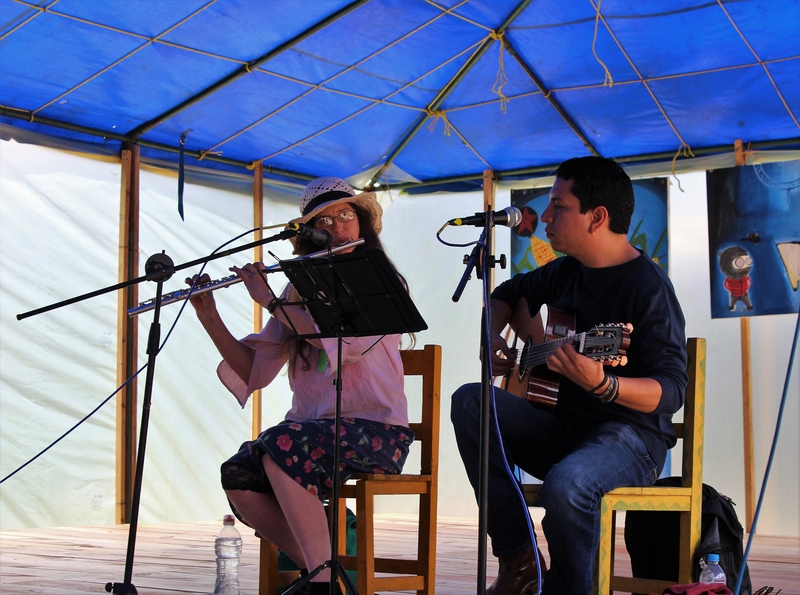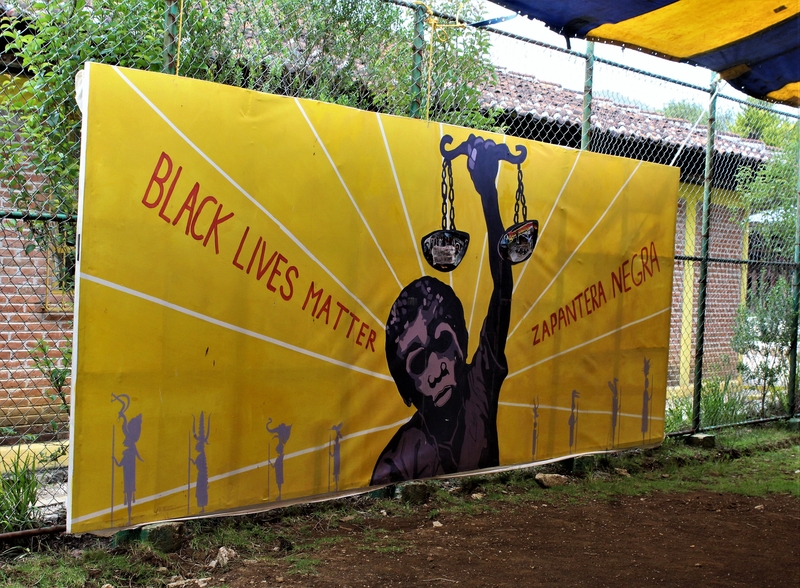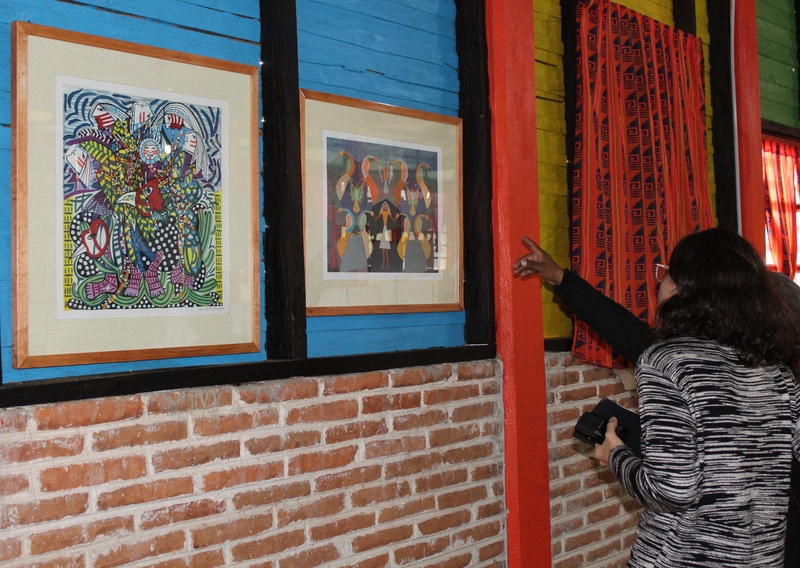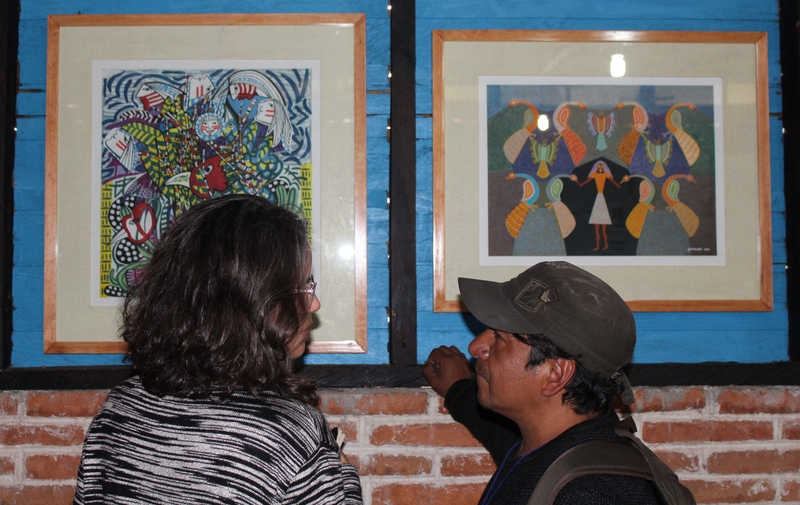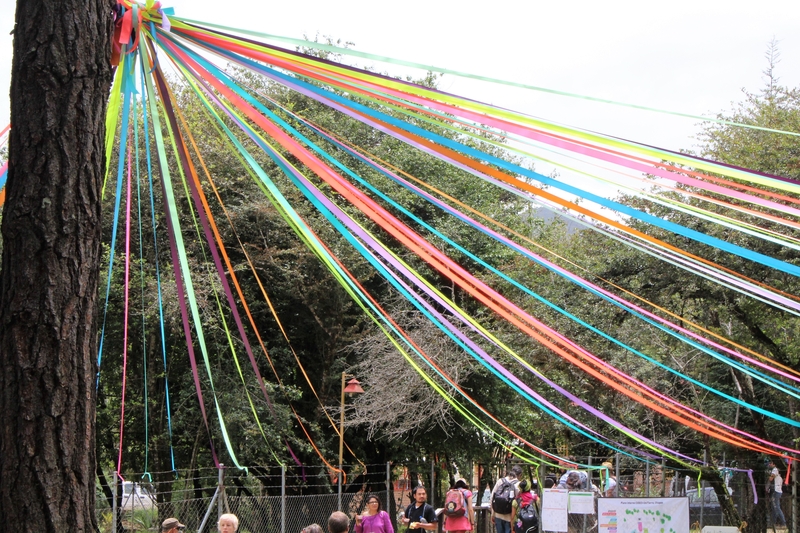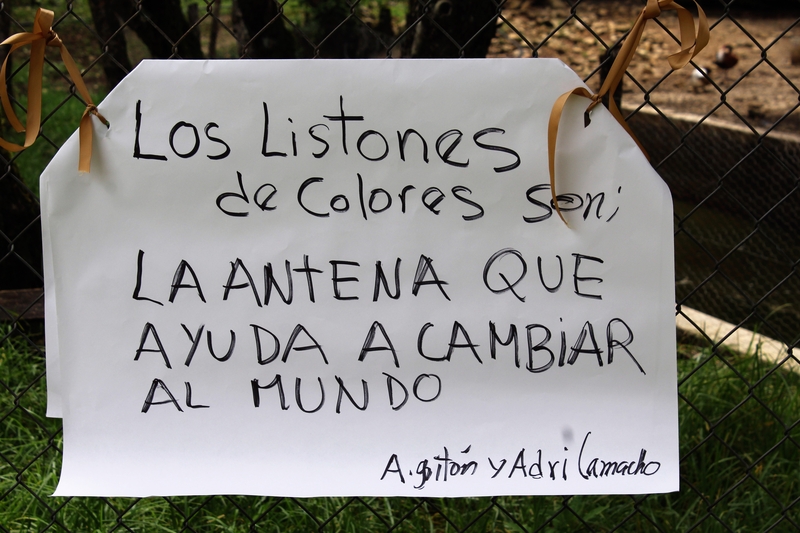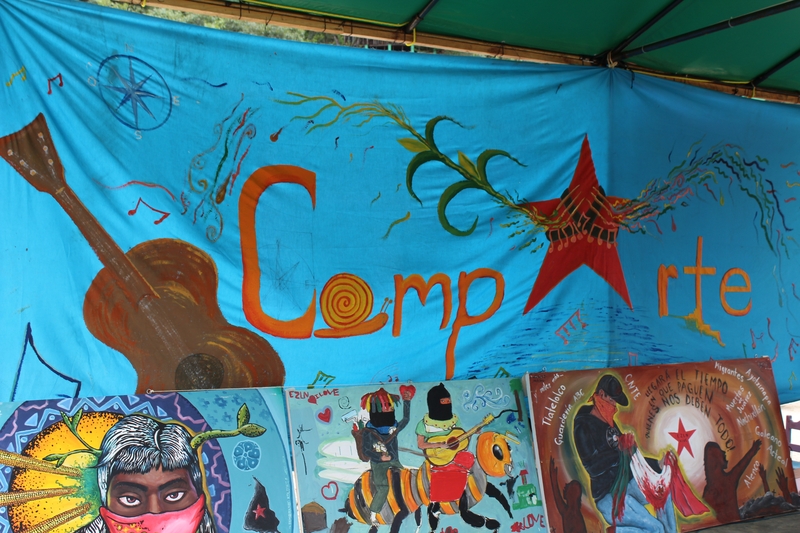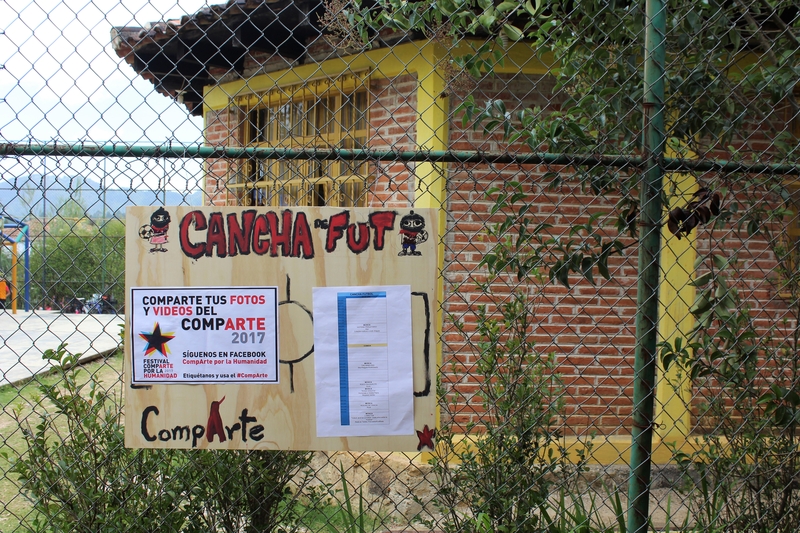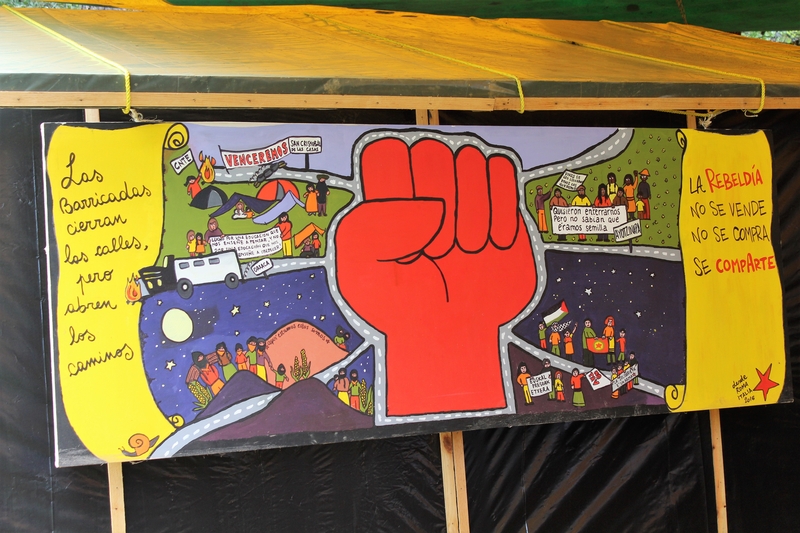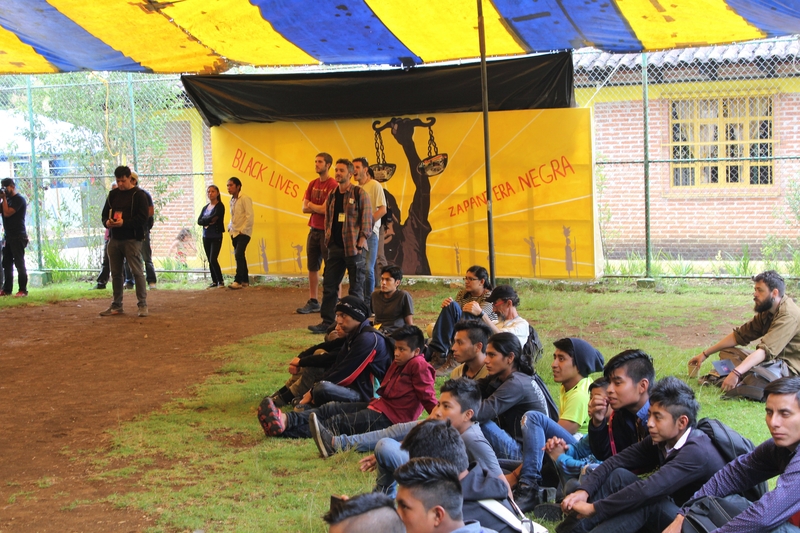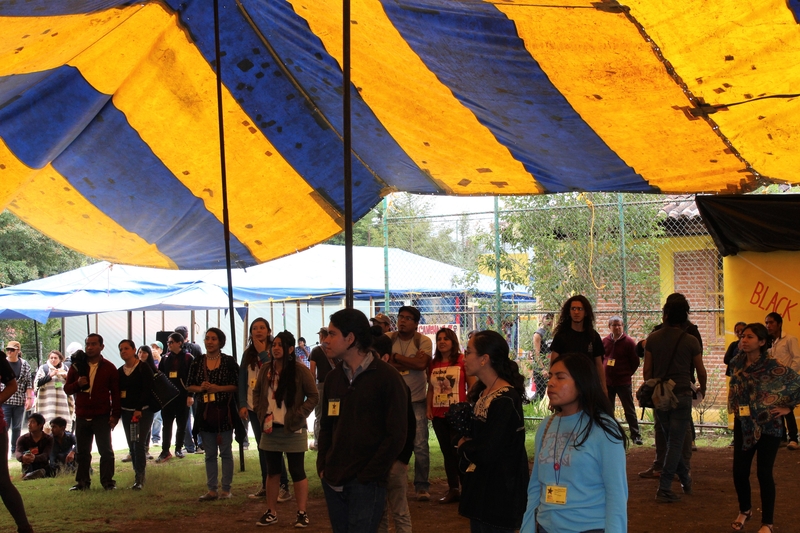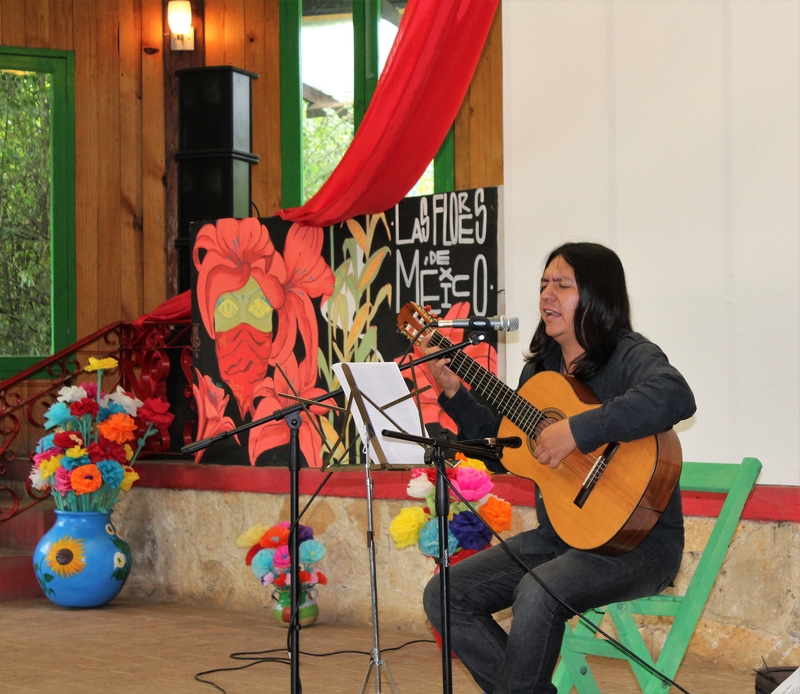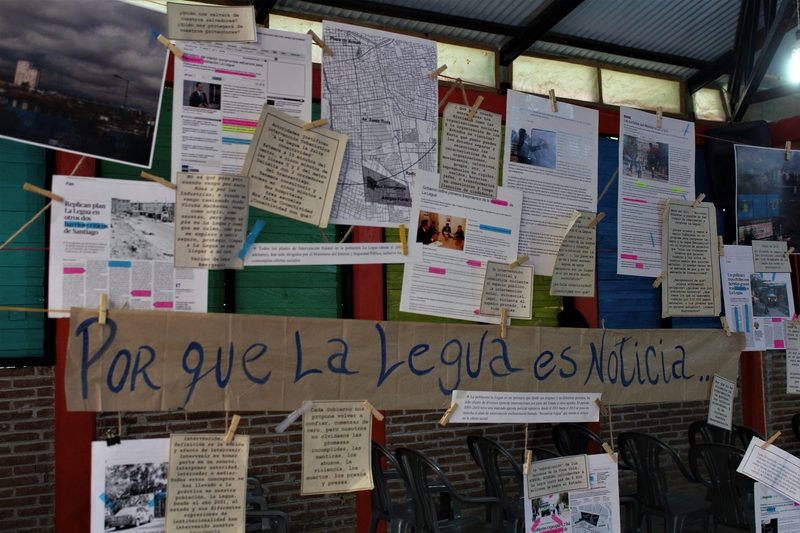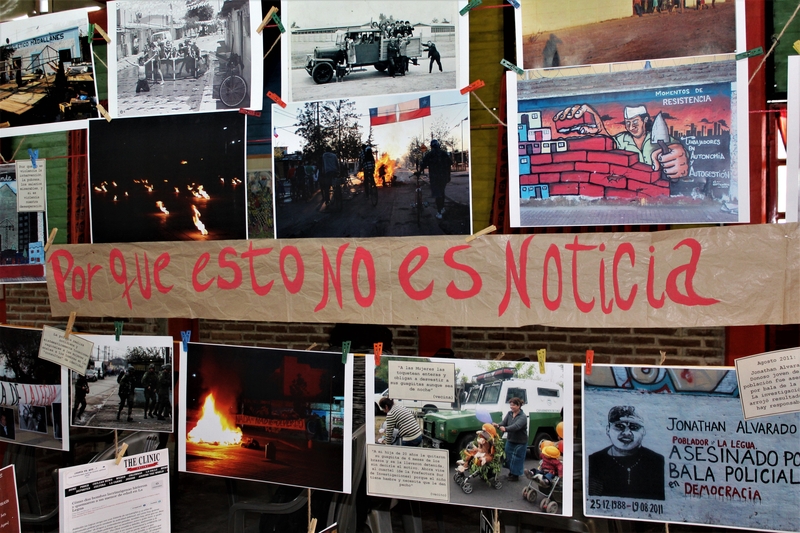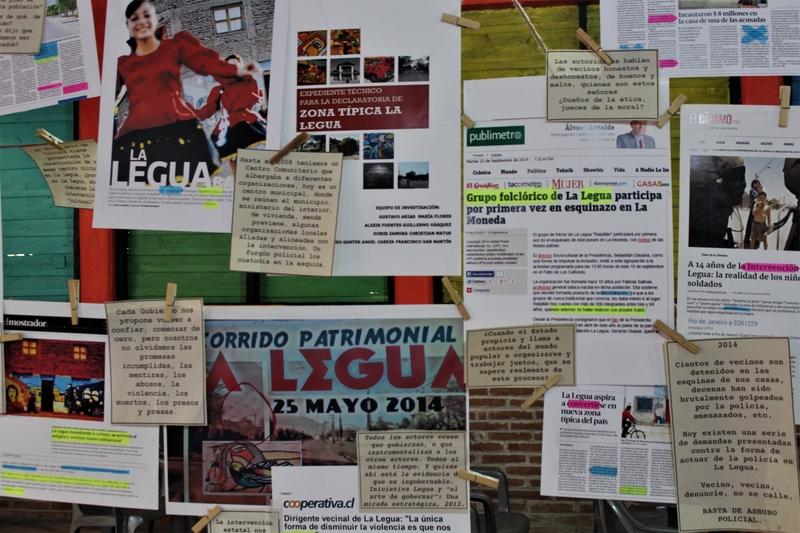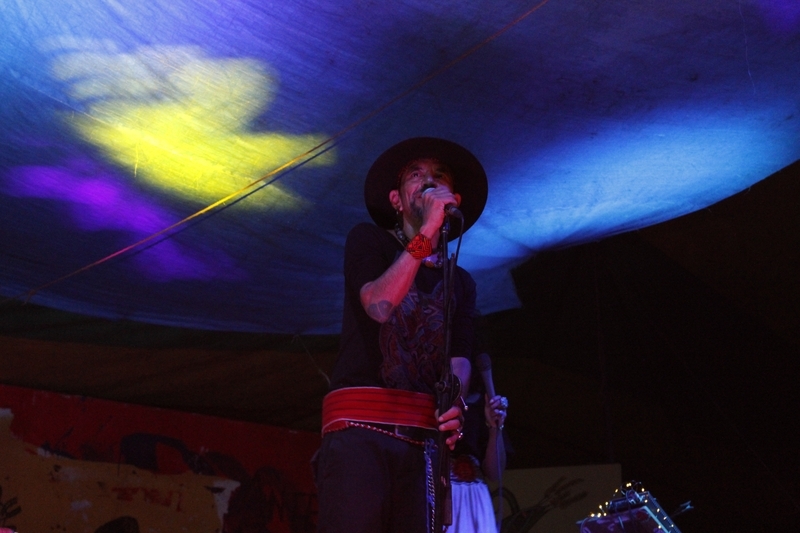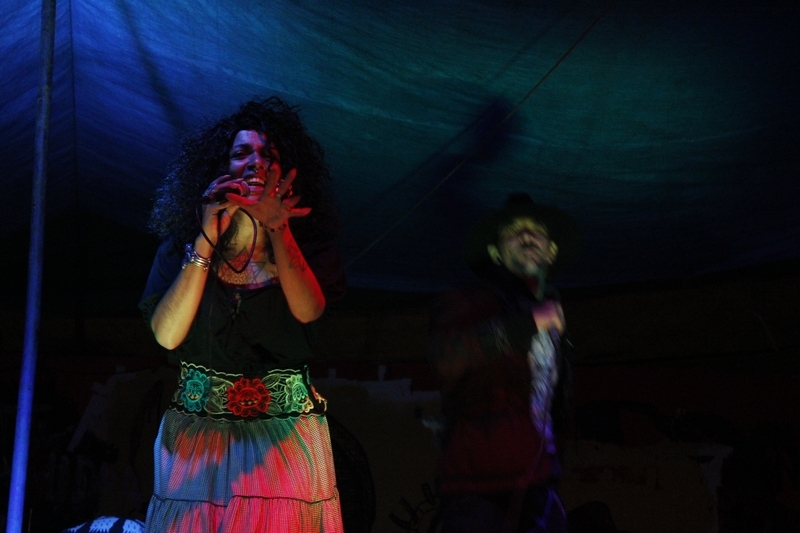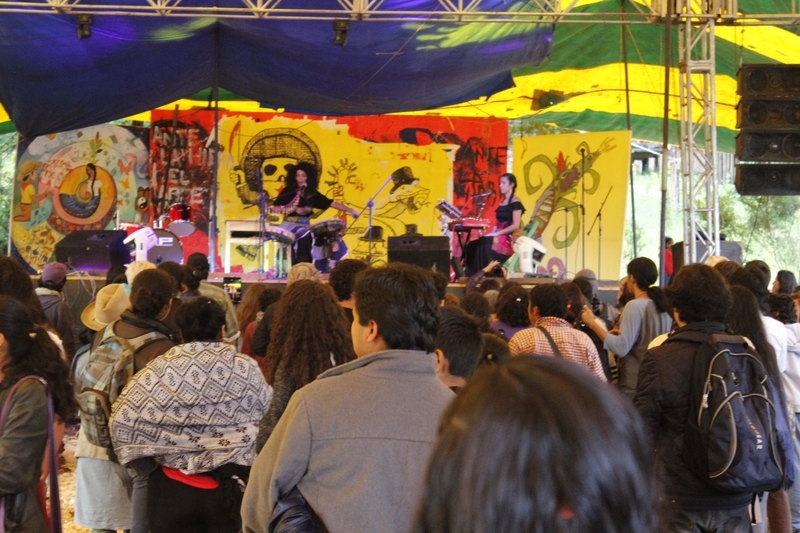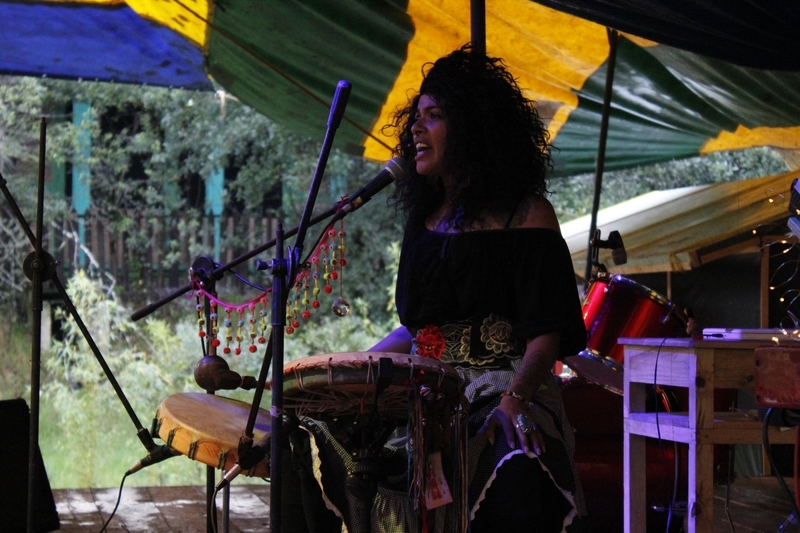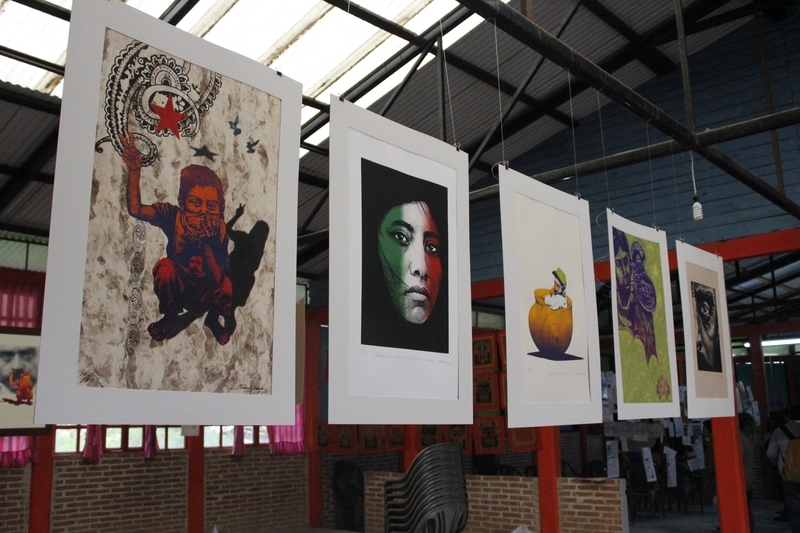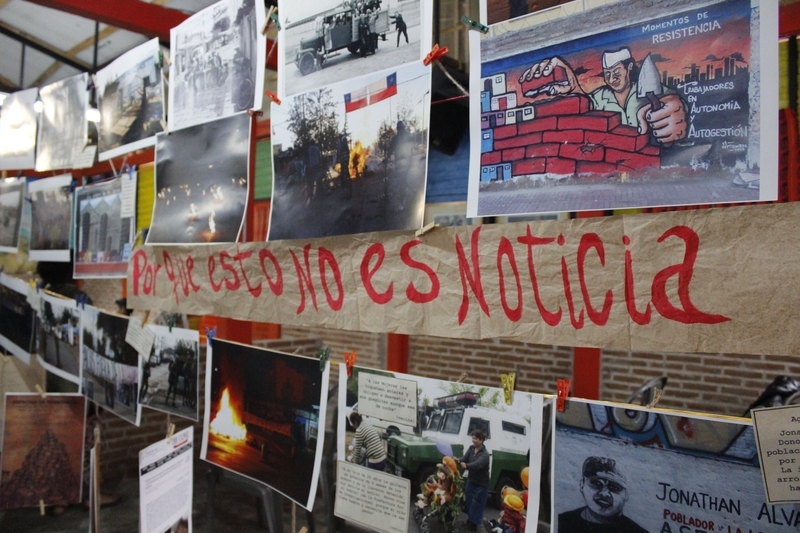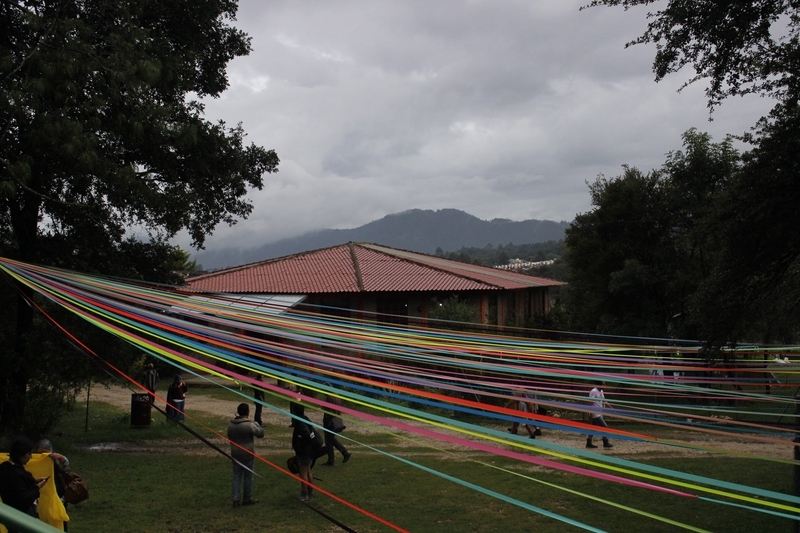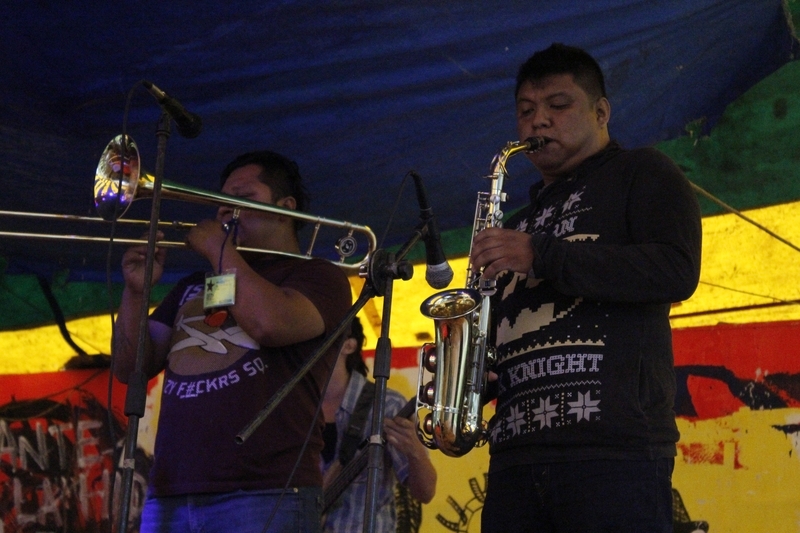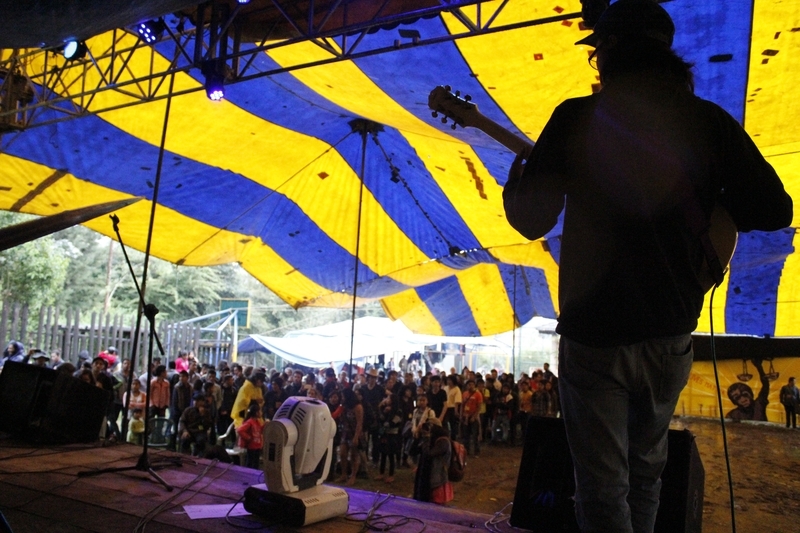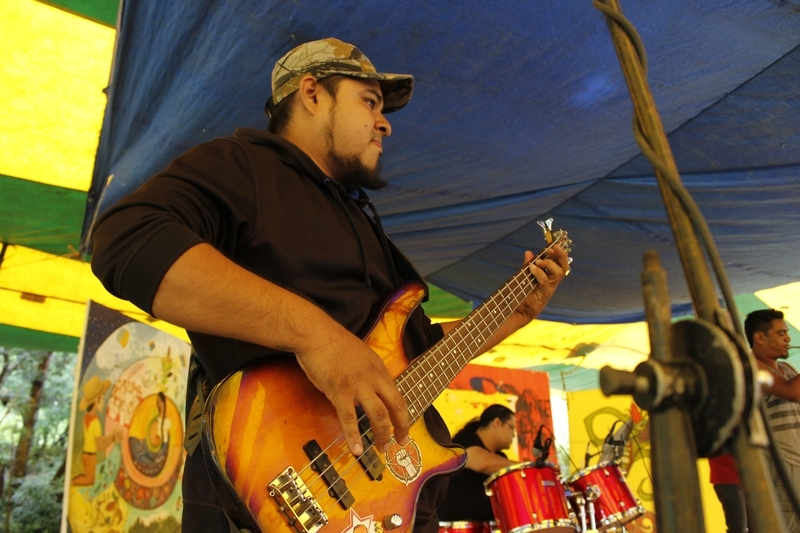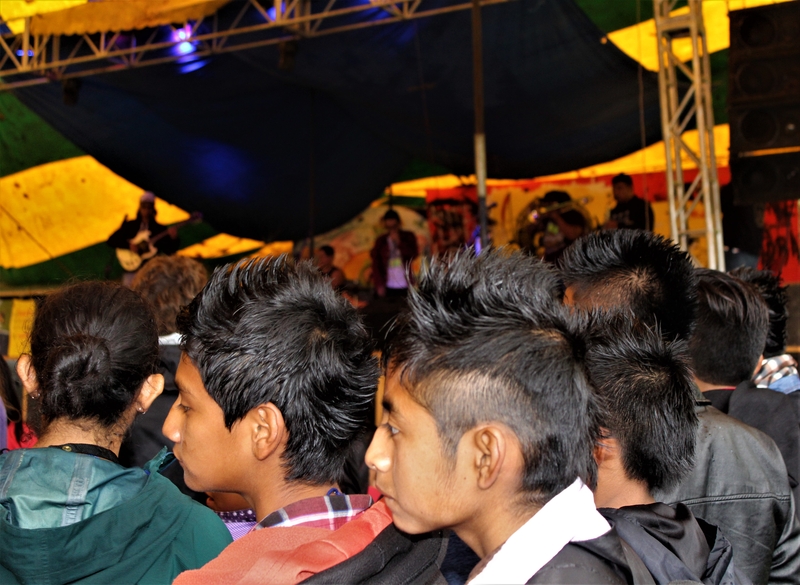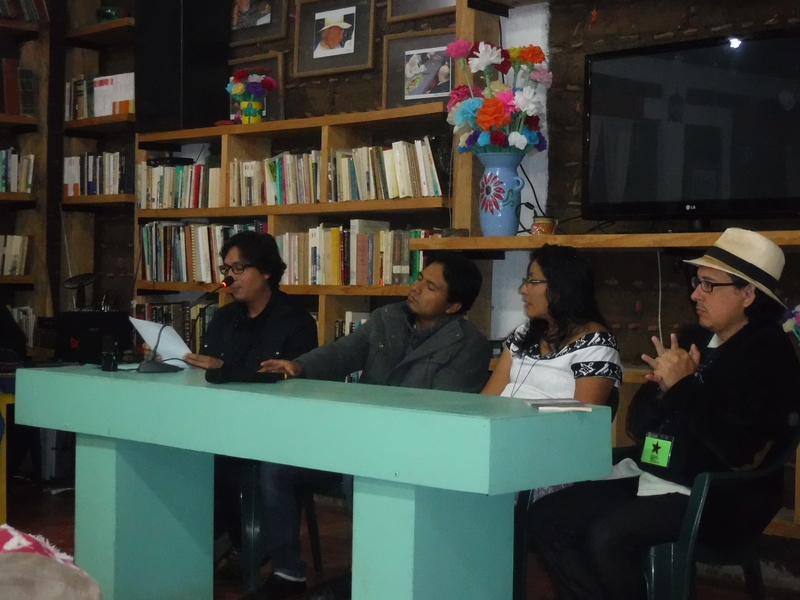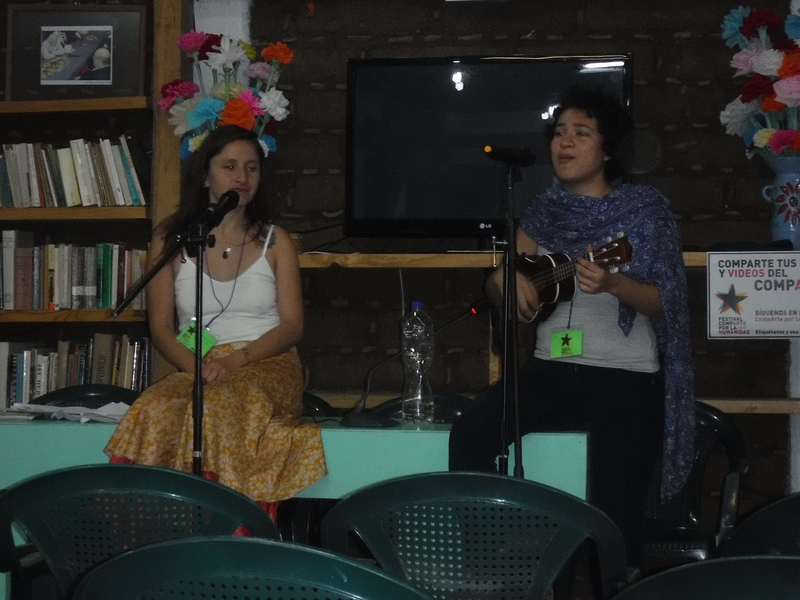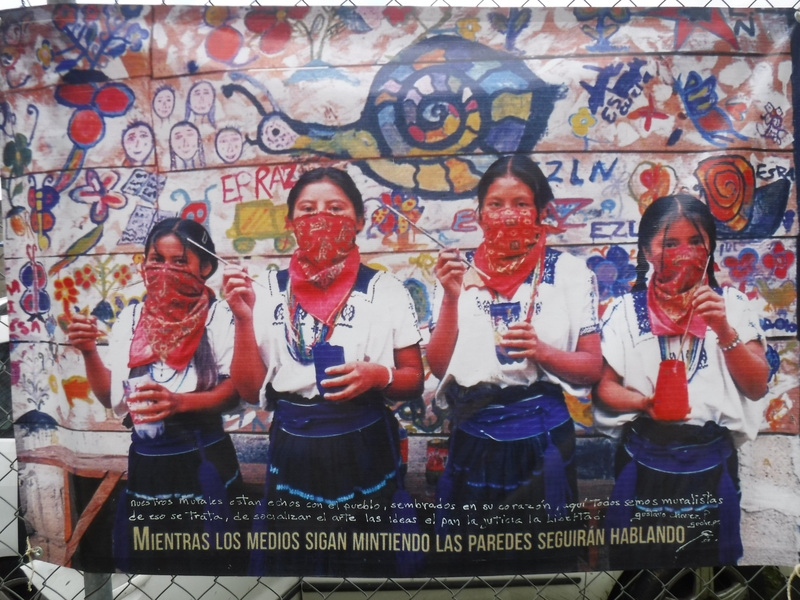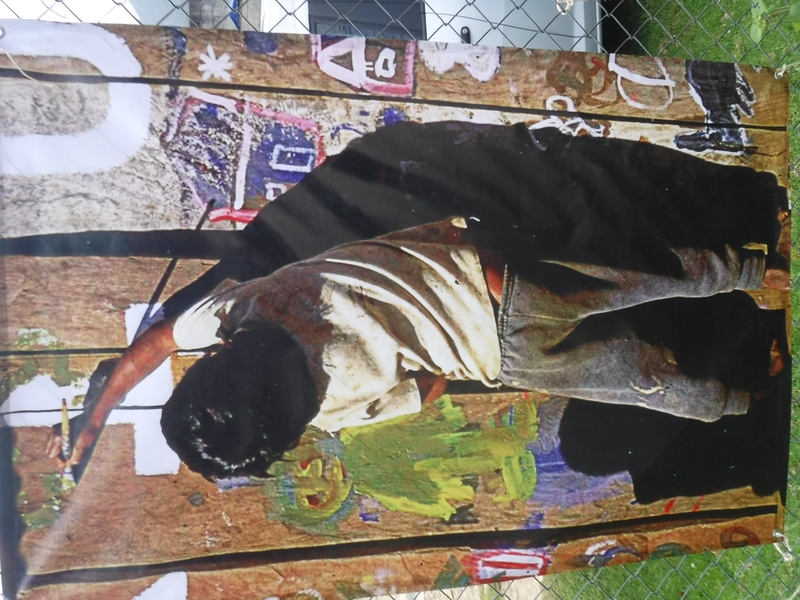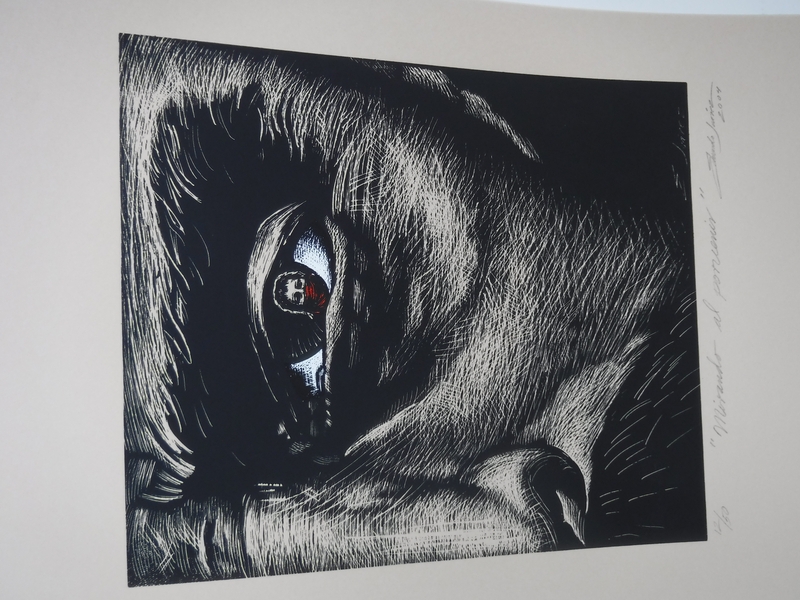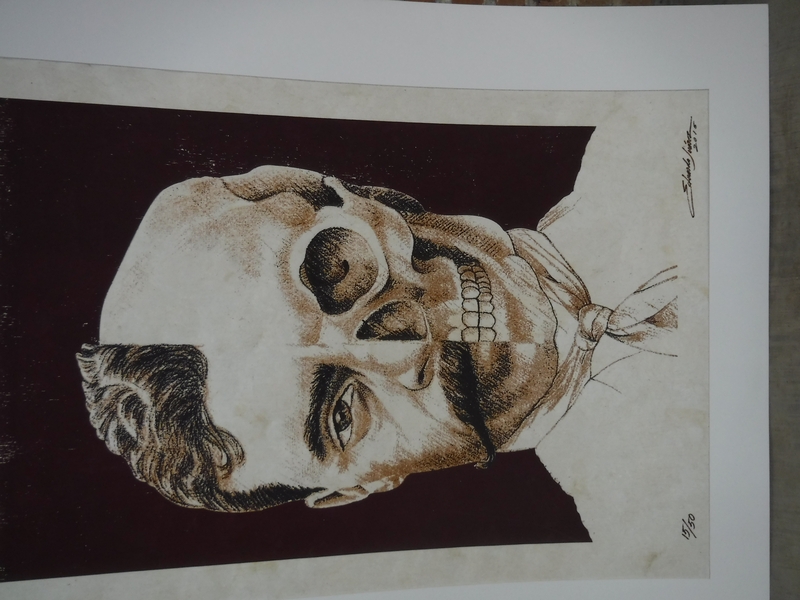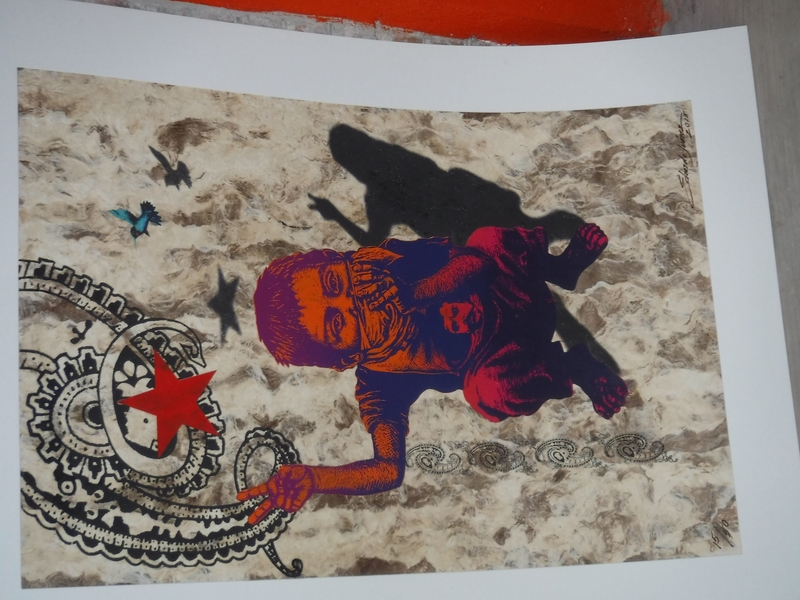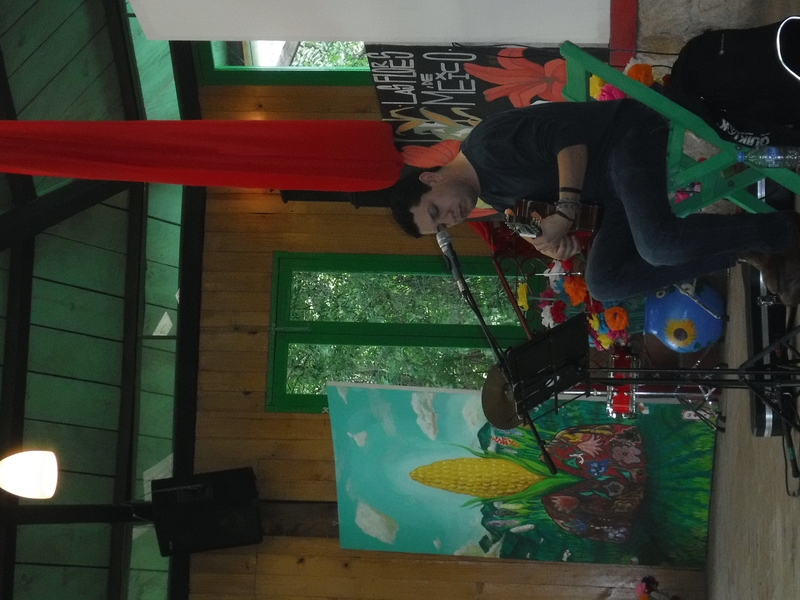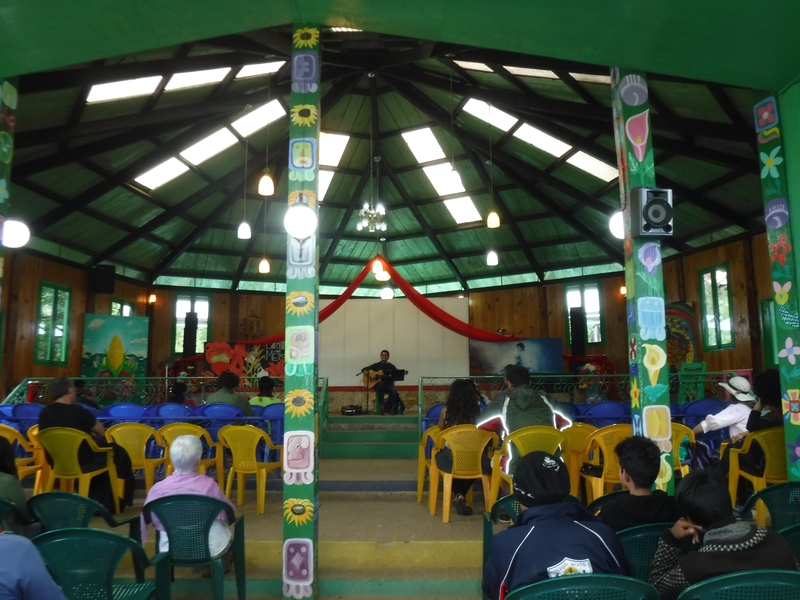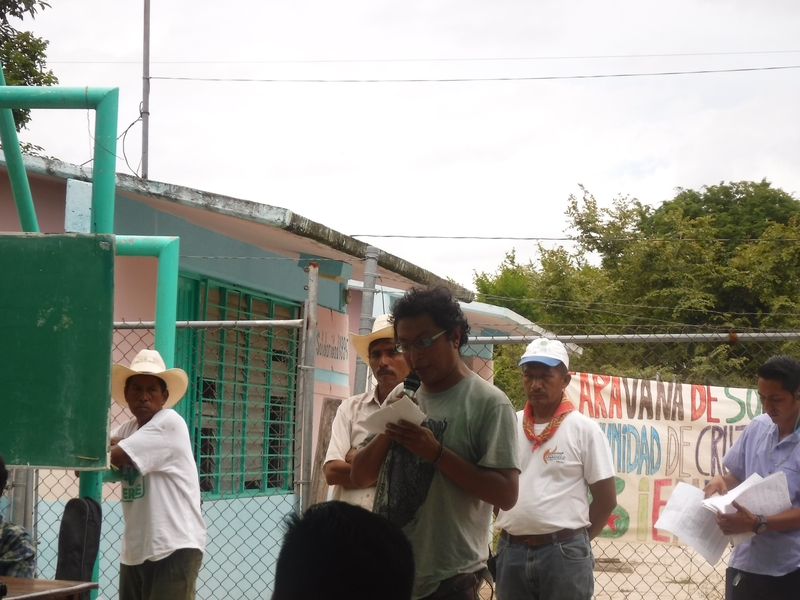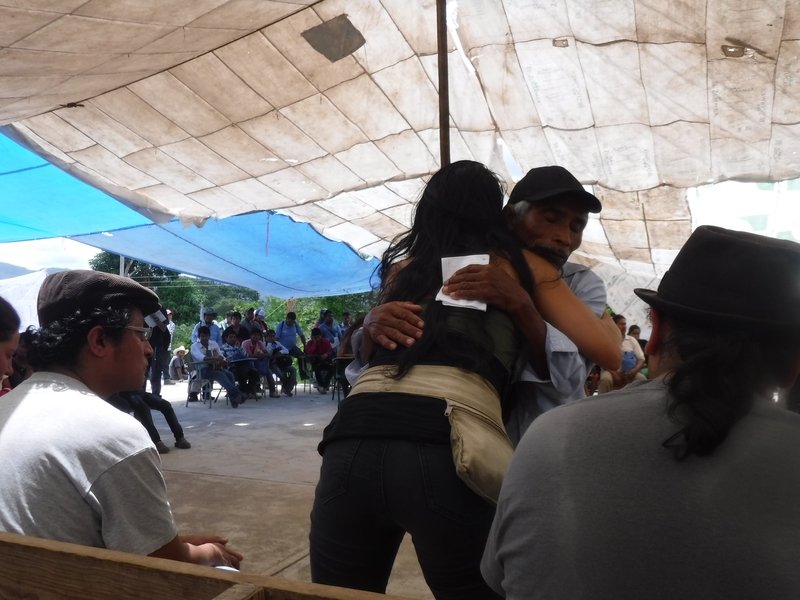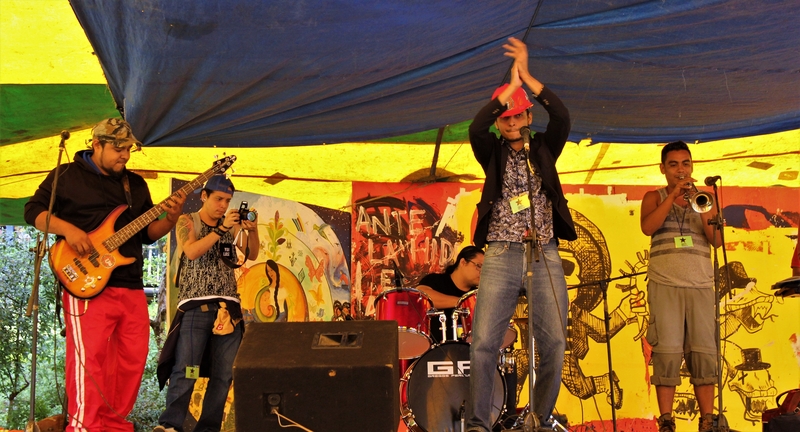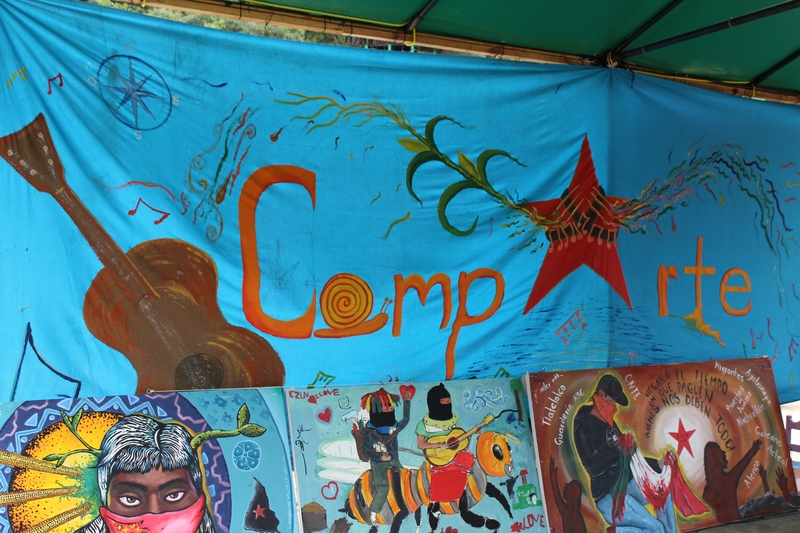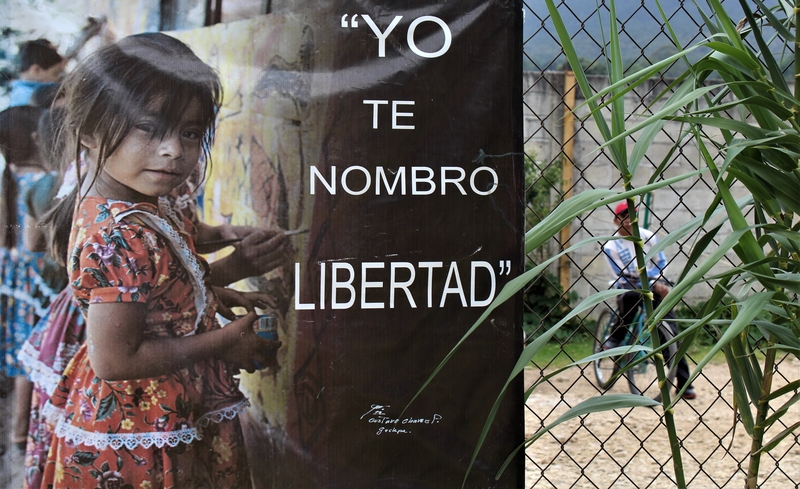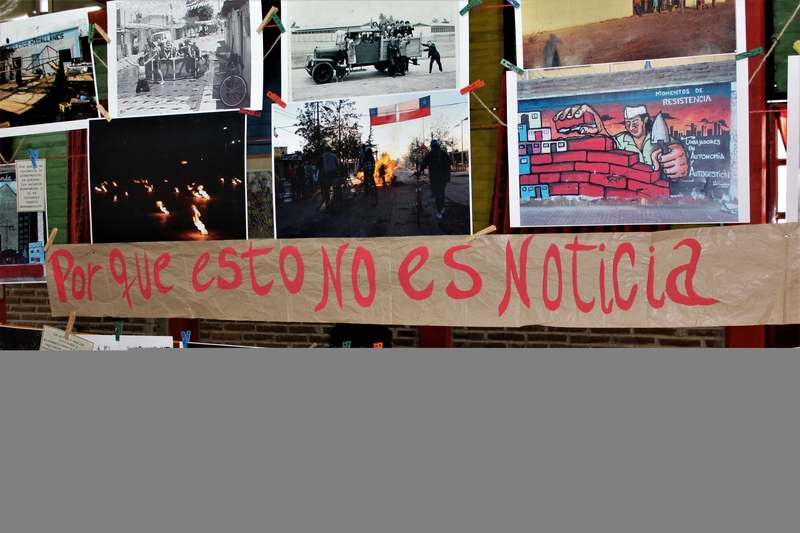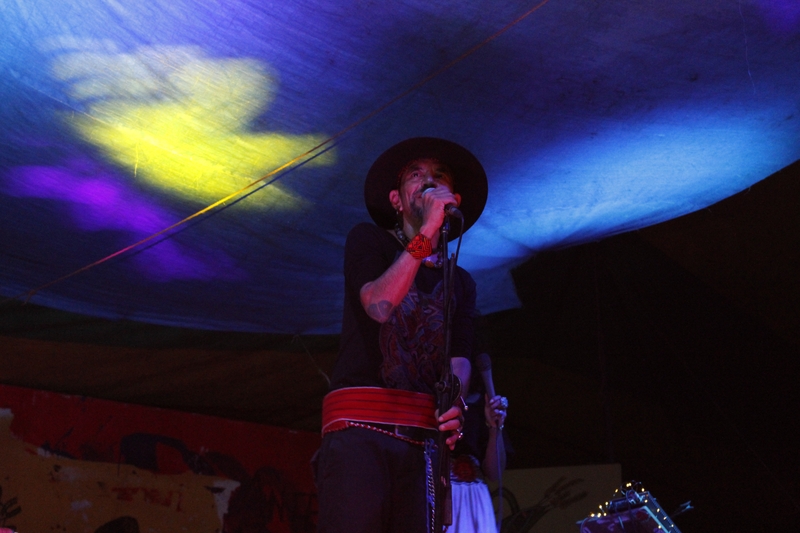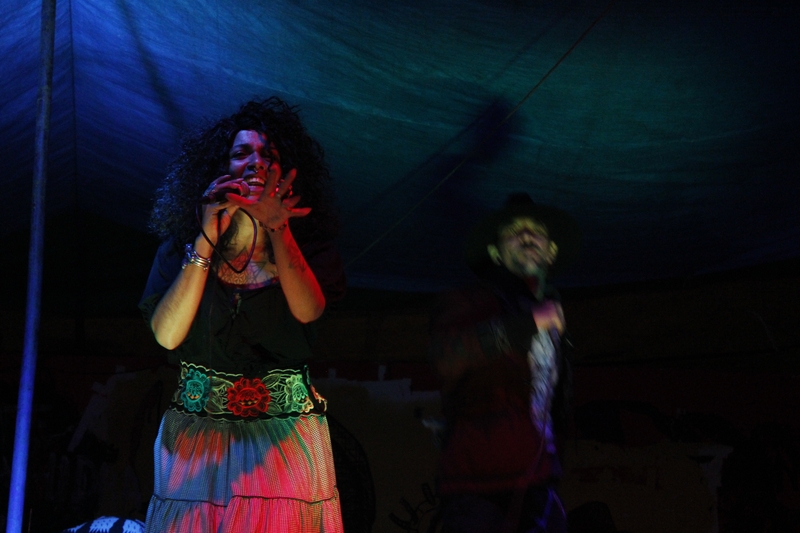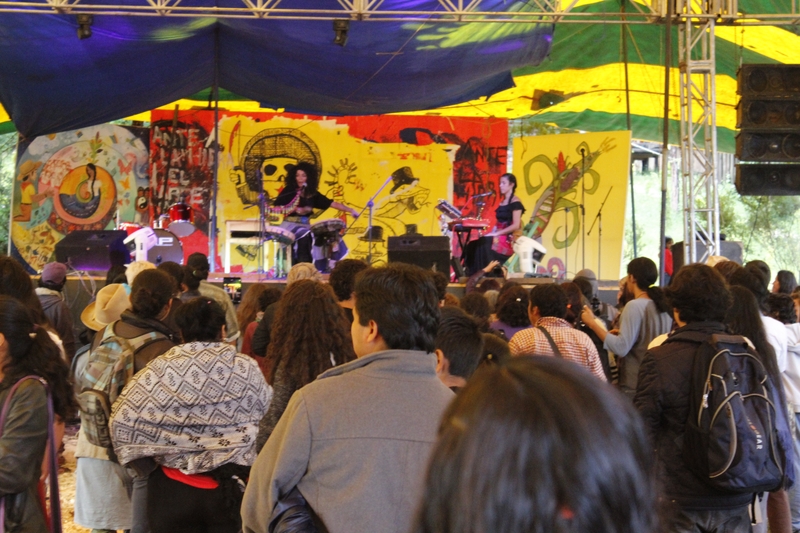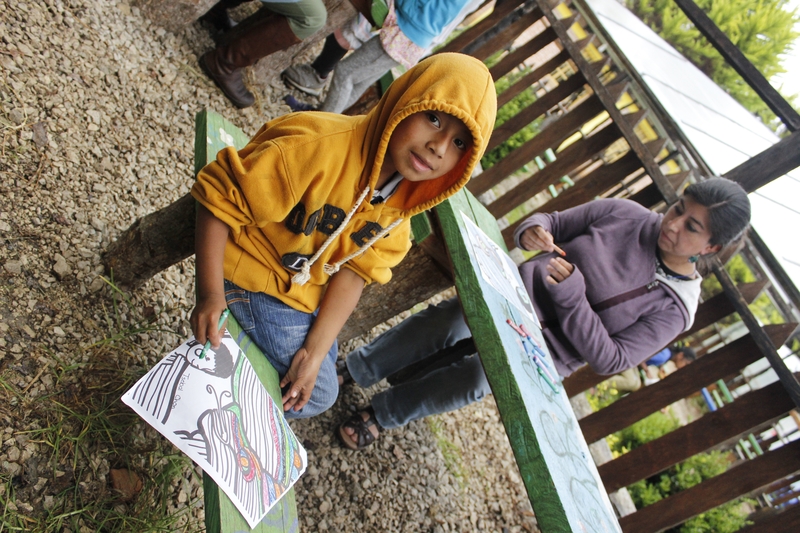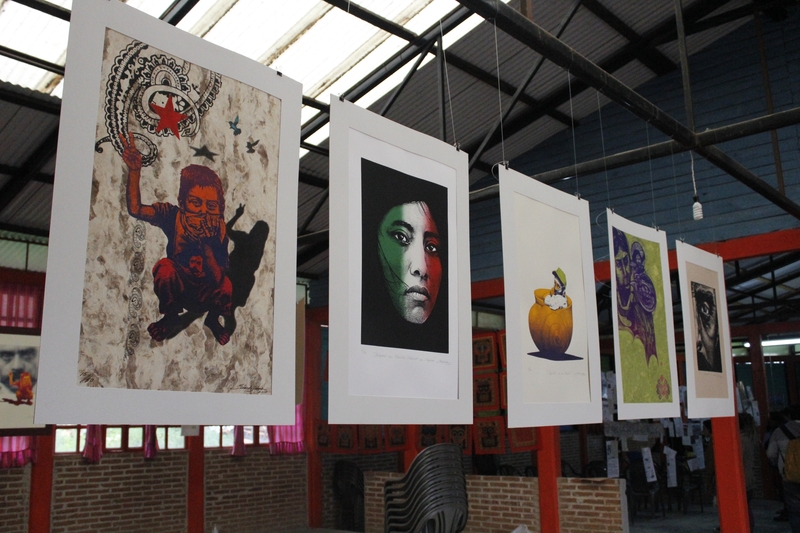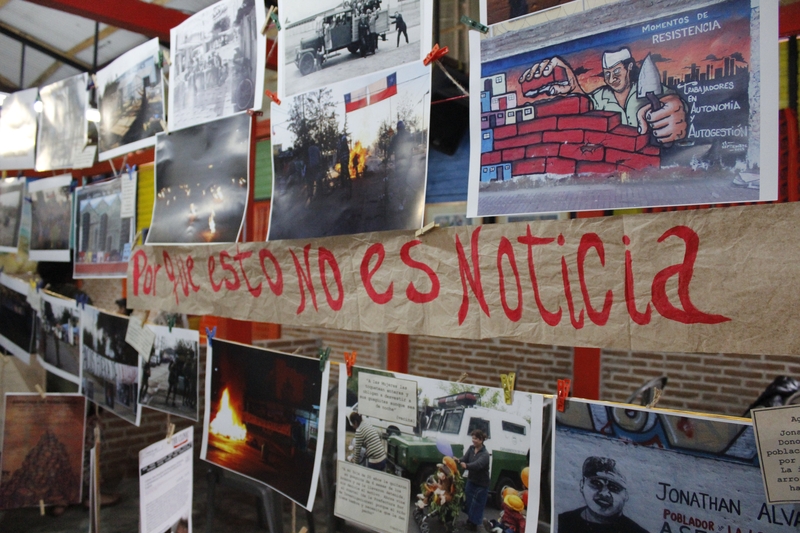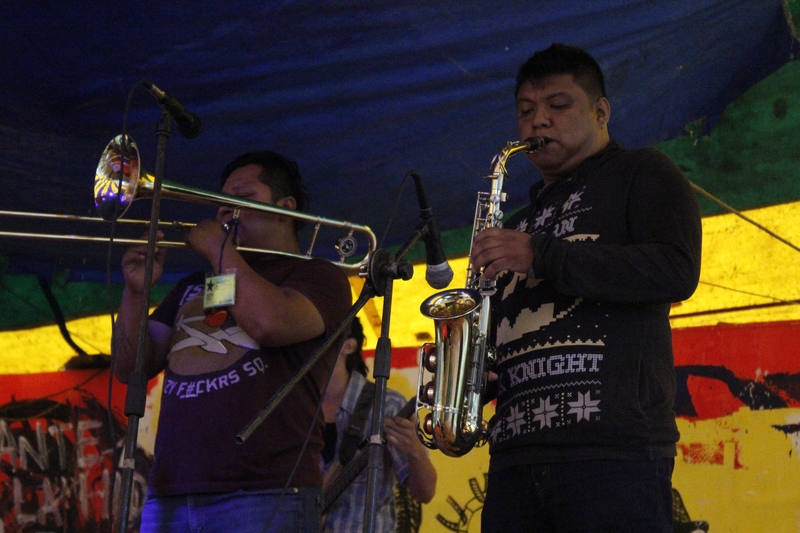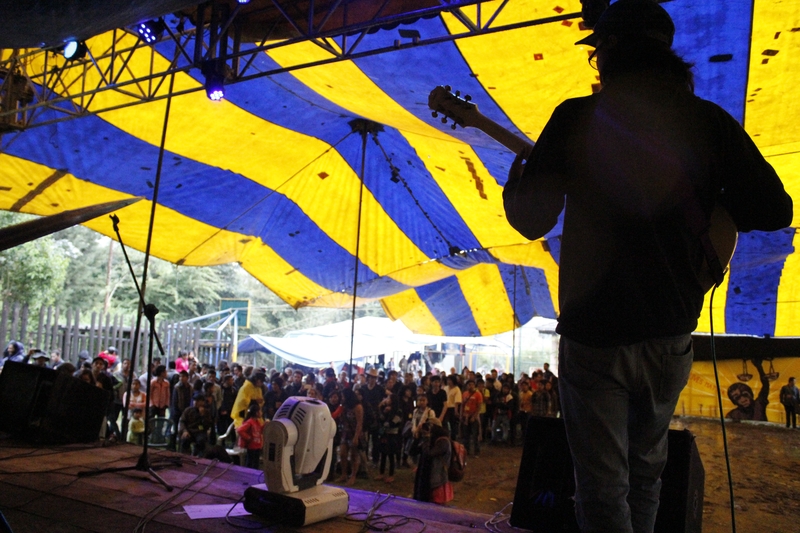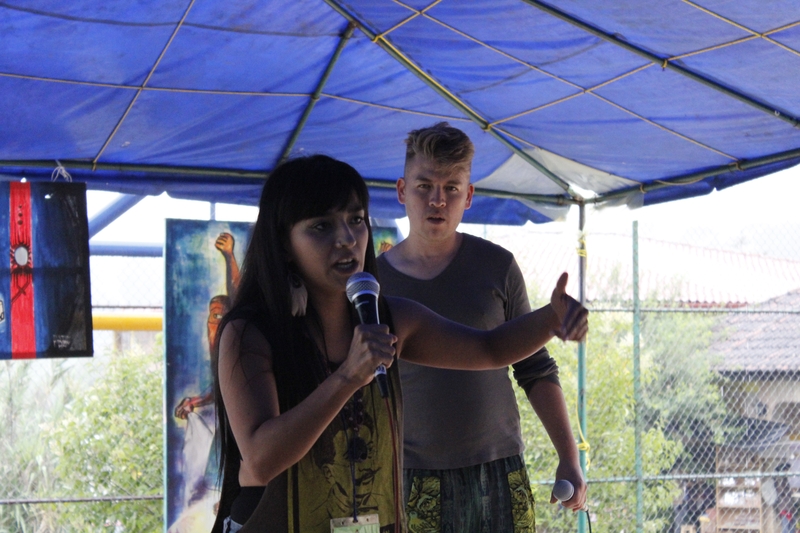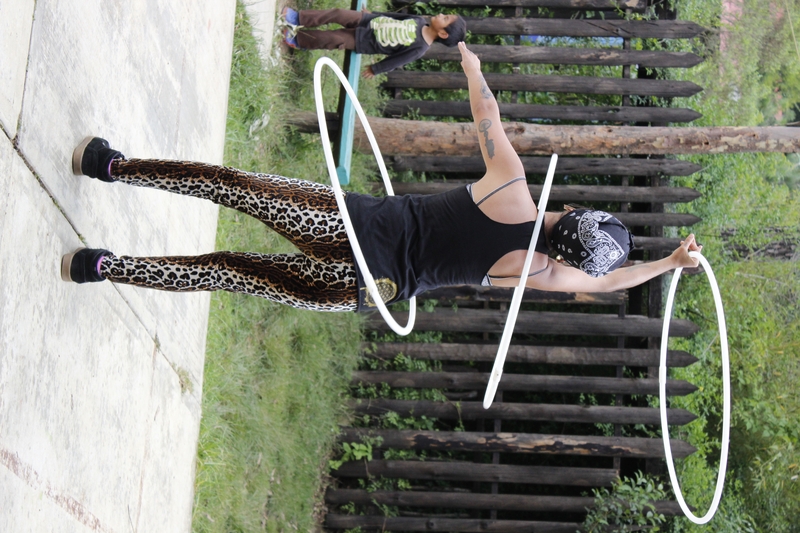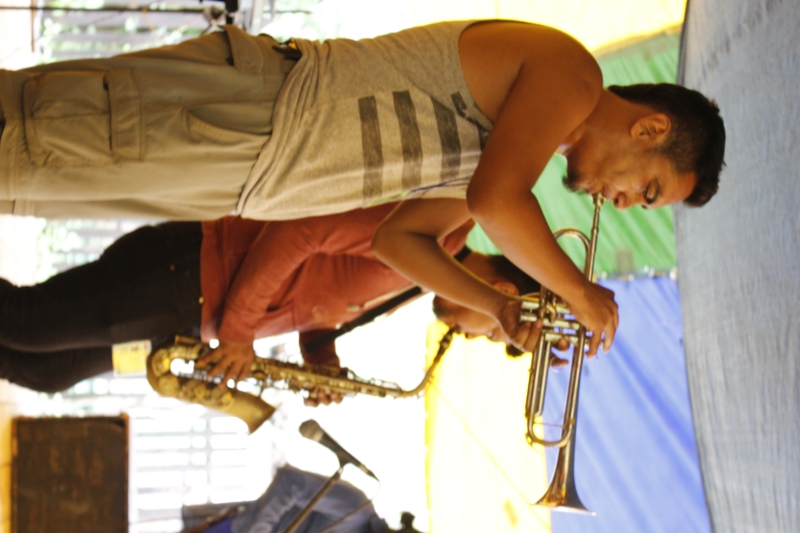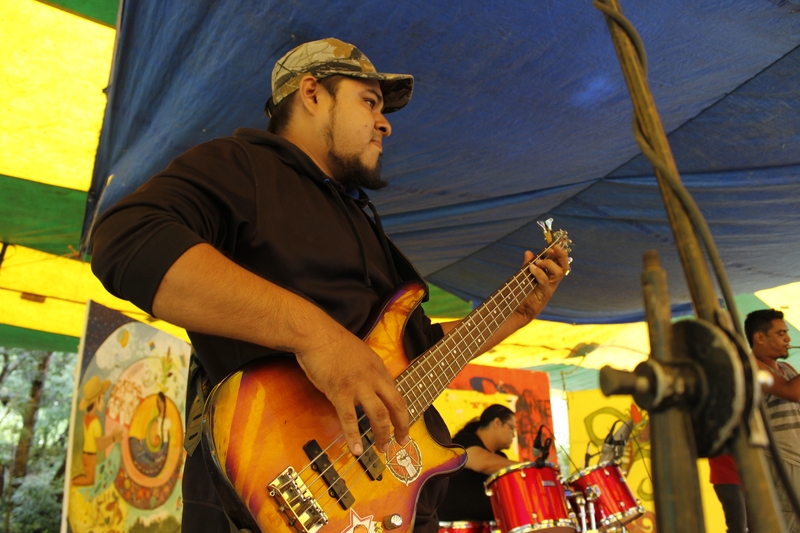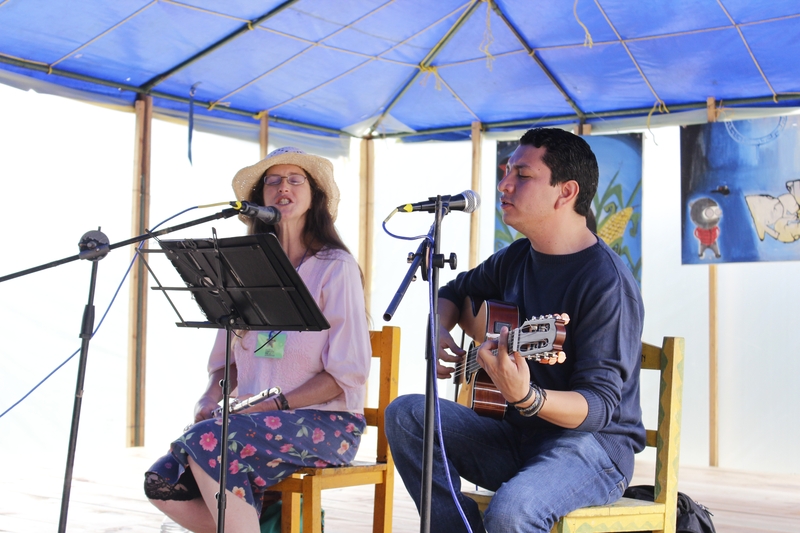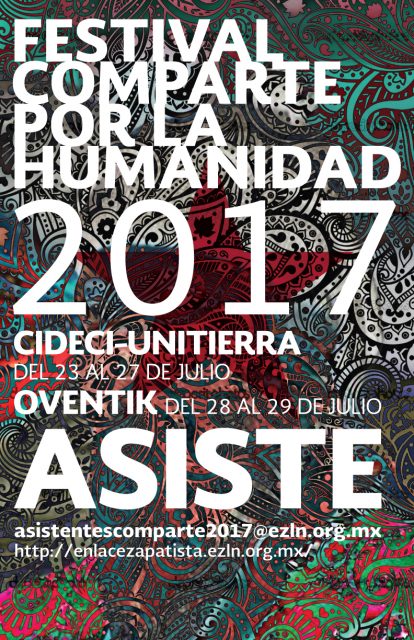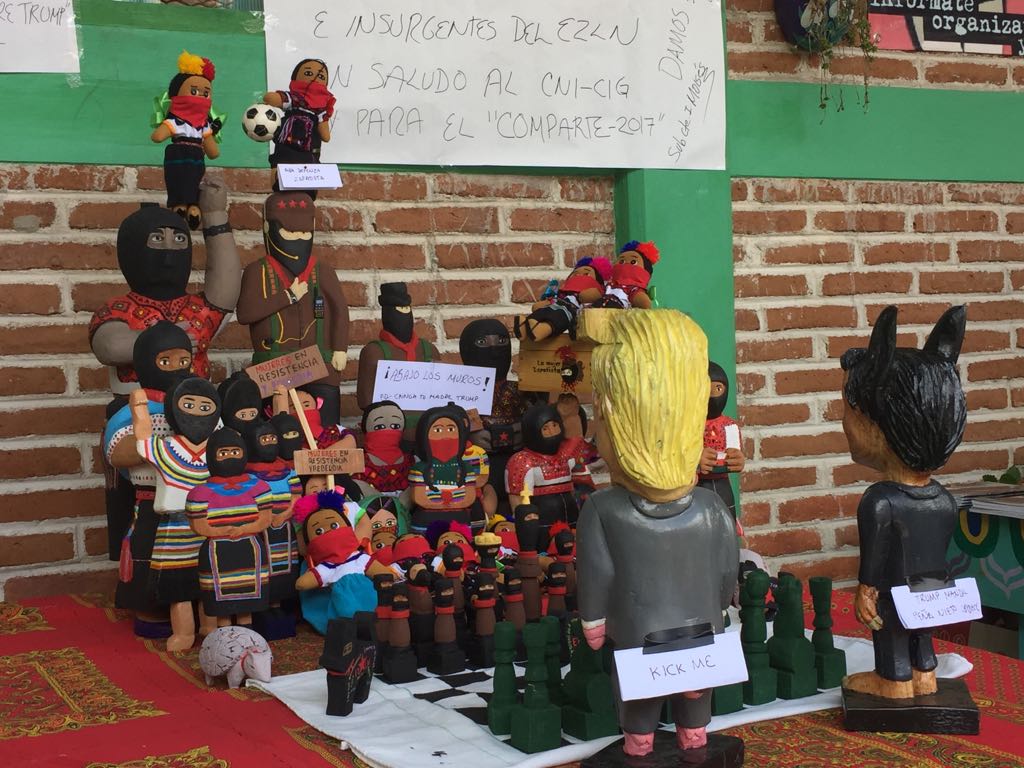
encuentros
CompArte por la Humanidad 2017 – Día 3 (audios y fotos)
CompArte por la Humanidad 2017
“Contra el capital y sus muros, todas las artes”
Día 3 – Martes, 25 de julio de 2017
Cideci / Universidad de la Tierra Chiapas
(Texto de Radio Pozol) San Cristóbal de las Casas, Chiapas. “Si no hay arte, no hay rebeldía, estamos construyendo diariamente algo nuevo”, afirmaron integrantes del colectivo de teatro Los Surdos, durante su participación en el festival CompArte por la Humanidad, convocado por la Bases de Apoyo del Ejército Zapatista de Liberación Nacional (EZLN), en la Unitierra Chiapas. “Nunca hemos creído en el arte por el arte, el arte tiene una posición política”, agregó el grupo fundado desde 1993, en el CCH Vallejo, de la ciudad de México.
“Donde haya un movimiento, nosotros tratamos de ir. La actividad cultural como el teatro, es un buen vehículo para sensibilizar a las personas”, aseguró el grupo artístico adherente a la Sexta, quien ha colaborado en movimientos de la Coordinadora Nacional de Trabajadores de la Educación (CNTE), y en estados como Guerrero y Chiapas. “El sistema te dice que no cuestiones, desde la elección del presidente, hasta la desaparición de estudiantes. Con el teatro que presentamos buscamos la reflexión, cuestionar el mundo, las injusticias, la violencia hacia los trabajadores, estudiantes, mujeres”, explicaron los actores en el CompArte. “La risa y las fiestas, también son armas de los pueblos, a pesar de tantas adversidades”, agregaron.
“Todos los pueblos son artistas, todos nacemos artistas, pero el sistema lo va destruyendo a medida que crecemos, llegó el momento de tumbarlo”, argumentó al colectivo Radio Zapatista, la pintora chilena Beatriz Aurora, con su exposición “Fuck Trump”, sobre los 23 años de lucha del EZLN, que es una muestra de dibujos en blanco y negro. “Hay que acabar con el capitalismo, un sistema demente y brutal. Con el CompArte, tomamos el futuro por asalto. El arte y la ciencia unen, rescatan lo mejor de la humanidad”, recordó la artista gráfica.
En este tercer día del festival tocó la participación del Coro de la Sociedad Civil las Abejas de Acteal. “Bienvenidos”, fue el canto con que las Abejas recibieron a los asistentes a su recital. Con el canto “Semilla Renovada”, dieron a conocer la campaña Acteal: Raíz, Memoria y Esperanza, que han lanzado desde el 23 de marzo de este año, en el marco del día internacional sobre el derecho a la verdad. La Campaña es lanzada en el contexto de 20 años de lucha contra la impunidad y 25 años de resistencia y autonomía.
La Mesa Directiva de la Organización Sociedad Civil Las Abejas de Acteal, agradeció el espacio, pues es el Festival CompArte indicaron, “es un espacio para seguir alzando nuestra voz de lucha, organización y contra la impunidad”. “Verdad y Justicia para vivir en armonía”, exigieron las y los originarios de Chenalvhó. “No podemos callar ante el dolor de tanta gente, ante la impunidad que estamos viviendo”, fueron las palabras llevadas en los cantos y que conmovieron hasta las lágrimas a los presentes.
Página del festival: https://www.facebook.com/comparte2017/?fref=mentions
Enseguida, el registro sonoro del tercer día del festival CompArte 2017. Pedimos disculpas a aquellxs artistas que no logramos registrar y lxs invitamos a pasar a la sala de medios para una breve entrevista para este registro.
Literatura/poesía
Antu Antinao – “Versada jarocha y spoken word” – Entrevista:
(Descarga aquí)
Colectivo Snichimal Vayuchil – presentación de libro de poesía:
- Trecho de la presentación: (Descarga aquí)
- Poema: (Descarga aquí)
- Preguntas de lxs zapatistas: (Descarga aquí)
Rodolfo Hernández Girón – “Los recordaremos por sobre todas las catástrofes” – Lectura de poesía:
(Descarga aquí)
Rita Valencia – Cuento
- Cuento leído por Francesca: (Descarga aquí)
- Preguntas de lxs zapatistas: (Descarga aquí)
Ana Lilia Félix Pichardo – “Amaneceres de invierno” (cuento y poesía)
- Entrevista: (Descarga aquí)
- Lectura de cuento “Eva”: (Descarga aquí)
Audiovisuales
Colectivo Código Sur (www.codigosur.org) – “Telecomunicaciones independientes en resistencia”, documental que recoge testimonios de varios colectivos de medios de comunicación alternativa.
(Descarga aquí)
Colectivo No Music No Life – Documental “Dusminguet i La Patxanga Jonda” – Entrevista:
(Descarga aquí)
Colectivo Etnocinema (www.etnocinema.cl) – “Antumawida” (película sobre los mapuches en el sur de Chile) – Entrevista:
(Descarga aquí)
Aureliano Leca (Lima, Perú) – “Donde la tierra emerge” (documental sobre la Organización Popular Francisco Villa de Izquierda Independiente) – Entrevista:
(Descarga aquí)
Colectivo Ojo de Agua Comunicación, Oaxaca (www.ojodeaguacomunicacion.org) – “El lugar que habitamos” (muestra de cine y radio comunitaria, con realizadores indígenas de toda América Latina) y “Dios nunca muere” (documental a 10 años de los sucesos en Oaxaca con la APPO) – Entrevista:
(Descarga aquí)
Grupo chileno Centro de Integración Fisura habla sobre el colectivo y la situación en la que se vive en el barrio de La Legua, Chile:
(Descarga aquí)
Artes plásticas
Desde San Cristóbal de las Casas, el Colectivo Tragameluz nos comparte la fotoinstalación que simboliza el muro a derribar con cada una de las postales que nos vamos llevando: fotografías tomadas por sus integrantes y que reflejan el interés sobre diversos temas sociales: (Descarga aquí)
Colectivo 88 – Entrevista con Daniel Soto:
(Descarga aquí)
Entrevista con Mario Fuente Cid, del Colectivo Edición de lo Social, sobre la presentación de un libro de artista llamado “30 vaquitas marinas”:
(Descarga aquí)
Música
El Coro de Acteal arranca aplausos y emociona en esta segunda edición del Festival CompArte por la Humanidad reivindicando con su canto el camino de la lucha. Aquí, “La cumbia de Acteal” y “Venceremos”:
(Descarga aquí)
Integrantes de la mesa directiva de la Sociedad Civil Las Abejas de Acteal y su Coro nos platican sobre su participación en el festival, así como de la campaña “Acteal, raíz, memoria y esperanza” que recientemente iniciaron y que se suma a un largo camino de exigencia de justicia:
(Descarga aquí)
La música y antropóloga Liliana García Sánchez nos presenta su trabajo de investigación sobre el canto revolucionario de Judith Reyes. Acompaña la lectura de algunos fragmentos de su libro con corridos compuestos e interpretados por Judith Reyes.
- Palabras durante la presentación: (Descarga aquí)
- “Corrido de Lucio Cabañas” e “Iztacalco” (Descarga aquí)
Los originales de San Andrés – música:
(Descarga aquí)
Colectivo de hip-hop Rima y Resistencia (compuesto por Mario Lopez / Panchito Rha, Yanga Beat, Billo, H-rebelde):
- Música:
(Descarga aquí) - Entrevista:
(Descarga aquí)
Mark LeVine habla sobre la relación entre música y resistencia a partir del músico revolucionario africano Fela Kuti:
(Descarga aquí)
Grupo Liquidambar (Ciudad de México):
- Entrevista:
(Descarga aquí) - Música:
(Descarga aquí)
Centro Social Anarkopunk Xanobil, Caminantes del Sureste – Entrevista:
(Descarga aquí)
Colectivo de hip-hop La Otredad (Jaec Fonseca, Paola Cardona, Regina Vázquez):
- Entrevista:
(Descarga aquí) - Rap:
(Descarga aquí)
El colectivo Mexikan Sound System cierra el día poniendo a bailar a los asistentes al Festival Comparte por la Humanidad con ritmos cumbiancheros y hip-hop:
(Descarga aquí)
Teatro, Performance, Danza
La Malagueta Circo (Montevideo, Uruguay y Guadalajara, Jalisco) – Entrevista:
(Descarga aquí)
Mario Galindez se presentó nuevamente con risas y pensamiento:
- Entrevista – Mario habla sobre su relación con los zapatistas y sobre el arte: (Descarga aquí)
- Entrevista – Mario habla sobre el significado de la máscara negra que usa en su espectáculo: (Descarga aquí)
- Entrevista – Qué significa el acto de regalarle una piedra a los compas: (Descarga aquí)
- Preguntas de lxs zapatistas: (Descarga aquí)
Luna Astorac y Selma Ce sobre el performance “Ser grieta” – Entrevista:
(Descarga aquí)
Argelia Guerrero – “Yo vengo a ofrecer mi corazón” – Danza en resistencia, cuenta la historia de la resistencia y la lucha en México desde la Revolución hasta nuestros tiempos. Apoya a los padres y madres de Ayotzinapa.
(Descarga aquí)
“Deselitizando la Academia” – Música para arpa, trompeta, guitarra y voz. Grupo que busca reapropiarse de la música académica para que sea también de nosotrxs lxs de abajo.
- Entrevista: (Descarga aquí)
- Trecho de presentación 1: (Descarga aquí)
- Trecho de presentación 2: (Descarga aquí)
Ubuntu – Colectivo de rap de la Ciudad de México
- Entrevista: (Descarga aquí)
- Trecho de presentación 1: (Descarga aquí)
- Trecho de presentación 2: (Descarga aquí)
- Trecho de presentación 3: (Descarga aquí)
Juan López Intzin – Música y canto en tseltal y tsotsil
- Trecho de presentación 1: (Descarga aquí)
- Trecho de presentación 2: (Descarga aquí)
(Español) CompArte por la Humanidad 2017 – Día 2 (Audios y fotos)
(Texto de Radio Pozol) San Cristóbal de las Casas, Chiapas. 24 de julio. “¿Usted preguntará por qué pintamos?, pintamos porque el grito no es bastante, y no es bastante el llanto ni la bronca; pintamos porque creemos en la gente y porque venceremos la derrota; pintamos porque llueve sobre el surco y somos militantes de la vida y porque no podemos ni queremos dejar, que el color se haga ceniza”, indicó el pintor Gustavo Chávez Pavón, basándose en el poema de Mario Benedetti, “Por qué cantamos”, esto en el marco del segundo día del festival “CompArte por la Humanidad”, convocado por la Comisión Sexta y las Bases de Apoyo del EZLN, del 23 al 27 de julio en la Unitierra Chiapas.
El pintor también conocido como “Guichepe”, compartió que tiene el oficio de “manchar paredes”, y que es parte de una generación que no solamente son artistas de manera individual, sino que buscan realizar un “muralismo comunitario”, que significa integrar a las comunidades en la realización de las obras. Chávez Pavón, se identifica como parte de lxs trabajadorxs del arte y la cultura, que se integran a la comunidad en donde trabajan, y esto sucede cuando los murales tienen identidad. “Cuando todxs se involucran todxs se sienten parte del grupo que hizo el trabajo, que están incidiendo en la historia”, aseguró Gustavo.
Por su parte las y los integrantes del colectivo de artistas gráficos “La Espiral de Fuego”, manifestaron su creencia en la colectividad y en la coperatividad, “como solución para organizarnos. El colectivo que surge de la Escuela Nacional de Arte Teatral, externó que “en la escuela no nos estaban enseñando a hacer arte, enseñaban la técnica”. Para Espiral el CompArte, abre las puertas para encontrar a otra gente que en la ciudad o en el campo están inconformes, “que están en busca de nuevas maneras de pensar y otras maneras de sentir y así poder compartir no solamente el arte, sino la presencia y admirar las diferencias”.
“La felicidad es subversiva y es una manera de resistencia ante lo caótico que puede ser el mundo en estos días”, aseguró Espiral. “Creemos muchísimo en la autonomía, tanto de las comunidades como nuestra autonomía como creativos, para crear nuevos lazos y nuevos mundos”, añadieron. “L@s zapatistas están viviendo el sueño que muchos tenemos, la utopía ellos la convirtieron en algo real y puede seguir alimentando todo, la ciencia, las creencias, las artes”, indicaron las y los integrantes de Espiral, de Fuego al impartir un taller de exploración escénica y exposición de pintura gráfica. Para las comunidades.
Para la comunidad artística que se dio cita en el Cideci Unitierra, es necesario crear un diálogo con las diferentes resistencias a nivel nacional e internacional. “Dialogar, discutir y conocernos para ver que estamos haciendo y como poder potenciar el trabajo que hacemos desde el arte”, coincidieron.
Durante este segundo día del CompArte, arribó al cideci el equipo de comunicación “Los Tercios Compas”, para cobertura el festival. Durante cuatro días las bases de apoyo zapatista documentarán las diferentes expresiones artísticas en el Cideci Unitierra Chiapas, en San Cristóbal, para posteriormente compartirlas con las comunidades autónomas del EZLN.
Para mañana martes 25, entre las diferentes manifestaciones artísticas, se presentarán el coro de las Abejas de Acteal y el grupo musical “Los Originales de San Andrés”, de Oventic Chiapas.
Enseguida, el registro sonoro del segundo día del CompARTE 2017.
Poesía y literatura
Francisco Coronel – “Invitación a la rebelión y otros” – Lectura de poesía:
(Descarga aquí)
Israel González – “Poesía Vegetal”:
- Entrevista: (Descarga aquí)
- Lectura: (Descarga aquí)
Cronopios del naufragio – “Aquelarre de Versos” – Lectura colectiva de poesía:
(Descarga aquí)
Mark Le Vine – “The Zombie Project” – Projecto sobre Fela Kuti, leyenda nigeriana afrobeat y propuesta de un nuevo proyecto Chiapas-África-Países Árabes – Entrevista:
(Descarga aquí)
Audiovisual
“Los hombres sin rostro” (Rusia) – Documental ruso sobre el zapatismo y otras luchas de Chiapas – Entrevista:
(Descarga aquí)
“Procesos de defensa territorial frente al extractivismo” (Colombia/México) – Entrevista:
(Descarga aquí)
“María López y Juan García: Héroes de San Juan Cancuc” – Colectivo Trilobite (México) – Entrevista:
(Descarga aquí)
“K’altik Zapatista” – InquietaDoc – Documental sobre las luchas por la tierra en Chiapas – Entrevista:
(Descarga aquí)
“Animación: Ticho y Fosca Liebre” – Entrevista:
(Descarga aquí)
Artes plásticas
Oceane Rouand – Entrevista:
(Descarga aquí)
Colectivo de Artistas 1984 – París/Lyon/Toulouse, Francia – Entrevista (en francés):
(Descarga aquí)
Cristian Muñoz – Entrevista:
(Descarga aquí)
Abel Muñoz Ramírez – Entrevista:
(Descarga aquí)
Nico Woodward – Entrevista:
(Descarga aquí)
Tania López Montes – Entrevista:
(Descarga aquí)
Colectivo Meztli Tonalli:
- Entrevista: (Descarga aquí)
- Trecho de cuento infantil: (Descarga aquí)
Hafid López – Entrevista:
(Descarga aquí)
Colectivo que trabaja con mujeres en situación de cárcel:
- Entrevista: (Descarga aquí)
- Trecho de plática: (Descarga aquí)
“Tejiendo otro México” – Entrevista: (Descarga aquí)
Música
Maruca Hernández Ramos:
- Entrevista: (Descarga aquí)
- Trecho de música: (Descarga aquí)
Colectivo Animalas – Entrevista: (Descarga aquí)
Colectivo Tripas de Gato – Entrevista: (Descarga aquí)
Raysa María Matilde Morales (Guatemala) – Entrevista: (Descarga aquí)
Rar(a)vis: Disidencias Sonoras – Improvisación, experimentación y exploración musical:
- Entrevista: (Descarga aquí)
- Música 1: (Descarga aquí)
- Música 2: (Descarga aquí)
Badjais Rock Punk: (Descarga aquí)
Carmelita – Música ranchera: (Descarga aquí)
Grupo Macondo – Folklor latinoamericano
- Música 1: (Descarga aquí)
- Música 2: (Descarga aquí)
Las Brujas – Son fusión
- Entrevista: (Descarga aquí)
- Música 1: (Descarga aquí)
- Música 2: (Descarga aquí)
- Música 3: (Descarga aquí)
“Ñamñam en el Concientarte” – Colectivo Casa Gandhi:
- Entrevista: (Descarga aquí)
- Música: (Descarga aquí)
Teatro/Performance
Mario Galíndez:
- Entrevista: (Descarga aquí)
- Trecho de presentación: (Descarga aquí)
Luis Alfaro – “El hombre que fingía orgasmos” (monólogo) – Entrevista:
(Descarga aquí)
Lukas Avendaño – “No soy persona, soy mariposa” – Danza performativa sobre la migración – Entrevista:
(Descarga aquí)
Arte sobre Ruedas – “Entre nosotras” – Obra sobre violencia de género y sororidad entre mujeres – Entrevista:
(Descarga aquí)
Compañía de Teatro de la UAM Cuajimalpa – “Nosotros somos los culpables: La tragedia de la Guardería ABC” – Trechos de la obra:
(Descarga aquí)
Teatro “Terrorismo de Estado, ¿Estado fallido o estafa ha habido?” – Obra de creación colectiva en un solo acto – Colectivo de Teatro Callejero Xutil:
(Descarga aquí)















